Product Strategy Example: The Corporate Card
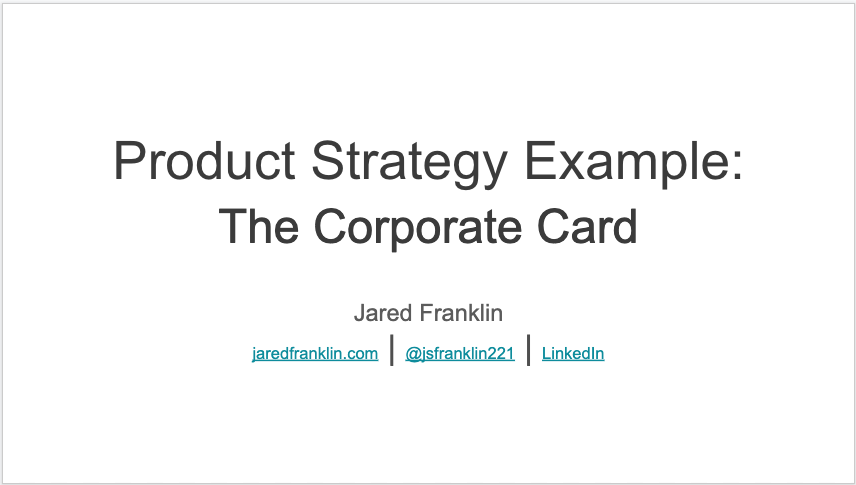
Disclaimer: I’m hoping my Twitter friends like Charley Ma take it easy on me when they see this. This is just meant to serve as an illustrative example– more Product Management than “Fintech.” I’ve never worked on corporate cards so all of my output is based on a weekend of light research. In no way am I claiming that the company or product details are 100% accurate. This was just an exercise completed within the time-box of a single weekend.
There’s no doubt that “product management” is an important function in financial services, especially “fintech” (commonly defined as modernized financial service companies and offerings). But the job of a Product Manager looks quite different everywhere you go. Regardless of the role or what the team looks like, the function serves a valuable purpose.
I began my career in the fintech space in 2007 when I joined Bill Me Later. Since then, I’ve worked at PayPal (twice), Blispay, Alliance Data, and Millennial Media (adtech). I won’t detail my experience here because you can read all about it in other posts. I like writing reflection posts and about things like startup acquihires, product management, health, personal finance, Coronavirus, markets, and more.
So, what type of product manager do I define myself as? I’m the generalist. Although most of my experience is specific to fintech, and more specifically, consumer credit– I’m a generalist PM. I’m the person who gets pulled into a little bit of everything from new product ideation sessions all the way to crisis management. I collaborate with teams across an org as much, if not more than anyone else– engineering, marketing, design, compliance, analytics, legal, finance, risk, sales, and account management. When people ask me what I do as a product manager, I tell them that it’s my job to do whatever’s necessary to steer a team, product, or company towards a successful outcome. Collaboration is key. Product managers shouldn’t work in vacuums. I’m nothing without great partners like longtime colleagues Alan Clark (UX), Christine Poulon (legal & compliance), Steven Wang & Brian Kane (analysts), Tonya Flickinger (business ops), Matt Hamel (engineering), and people in all the other functions I named earlier.
Illustrative Exercise
I thought it would be cool to share an example exercise that someone like me would be responsible for wrangling together as a product manager in a financial services company. Note that the format is not important– the end conclusions are. In fact, I often prefer essays over slides but most people don’t have attention spans for them.
Task
Analyze new players in the corporate card space since it appears to be increasingly garnering attention (and VC $$$), and identify a new product opportunity.
Constraints
Limit time spent to a weekend and don’t tap others in for support (despite that not mimicking a real-life work scenario).
Goal
Highlight the type of process a product manager may follow, the types of things they’ll think through, and the type of output they may develop.
Getting Started – Your Outline
I always start with an outline– bullets + lists. I love lists. Lists are great. Colleagues often ask me how I know so much about so many random things. I’m always a little embarrassed when I have to reveal my secret… I don’t. I’m just diligent with keeping lists in ol’ trusty Evernote.
Anyway, the outline:
- Background
- Competitive Analysis
- User (customer) Interview
- Identify a New Product Opportunity
- Wireframes
That seems like a solid yet simple outline despite lacking some super important elements you’d want to consider if this was more than just an illustrative example– namely finance & risk. As I said, I’m a generalist. I ground everything in rationality and common sense. I rope together all of the pieces and I’m the pacesetter. But I’m not the expert in every area, or potentially any area at all. Financial services, and specifically credit, are complex so there’s a lot of specialization across an organization. I’ve worked with many who are incredible in this area (like Mike Ritchie) who I’d work closely with on a project like this if it were more than just a fun exercise.
Background
Every presentation needs to start the audience off on a level playing field. They need to be brought up to speed. They need to know what you’re talking about and more importantly, why it matters. After all, why do corporate cards matter? What function do they serve? How do they relate to other forms of corporate spending?
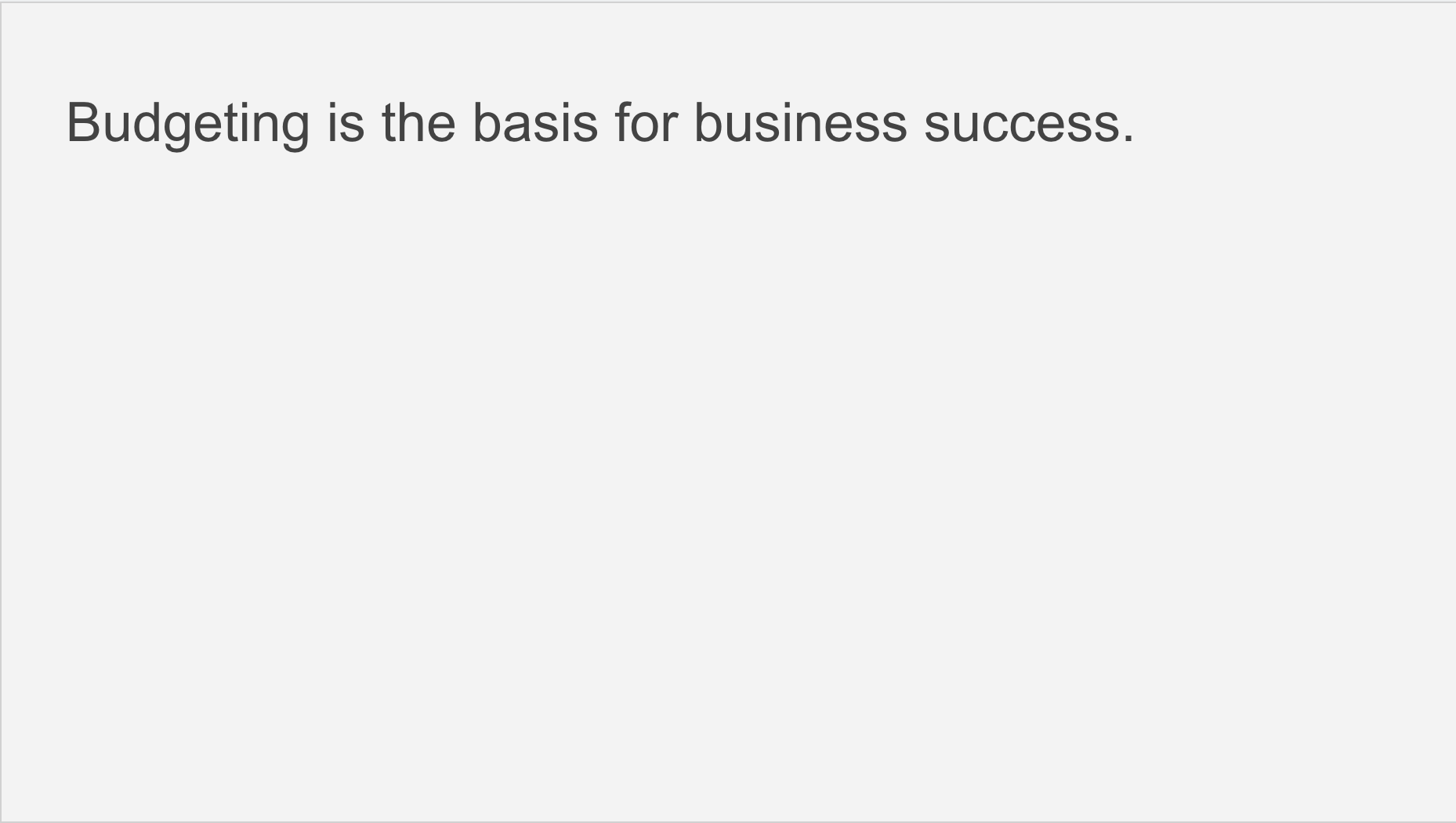
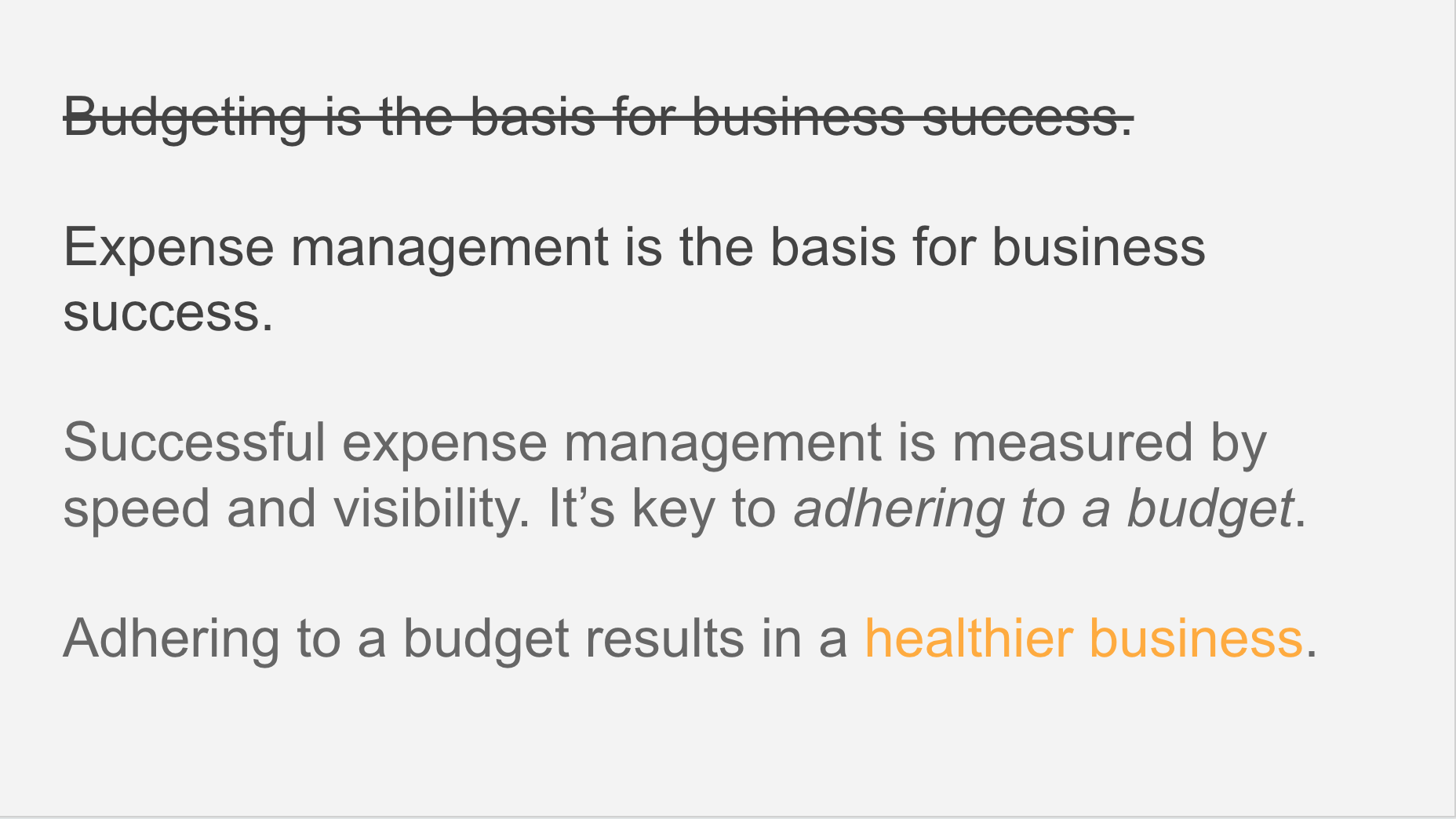
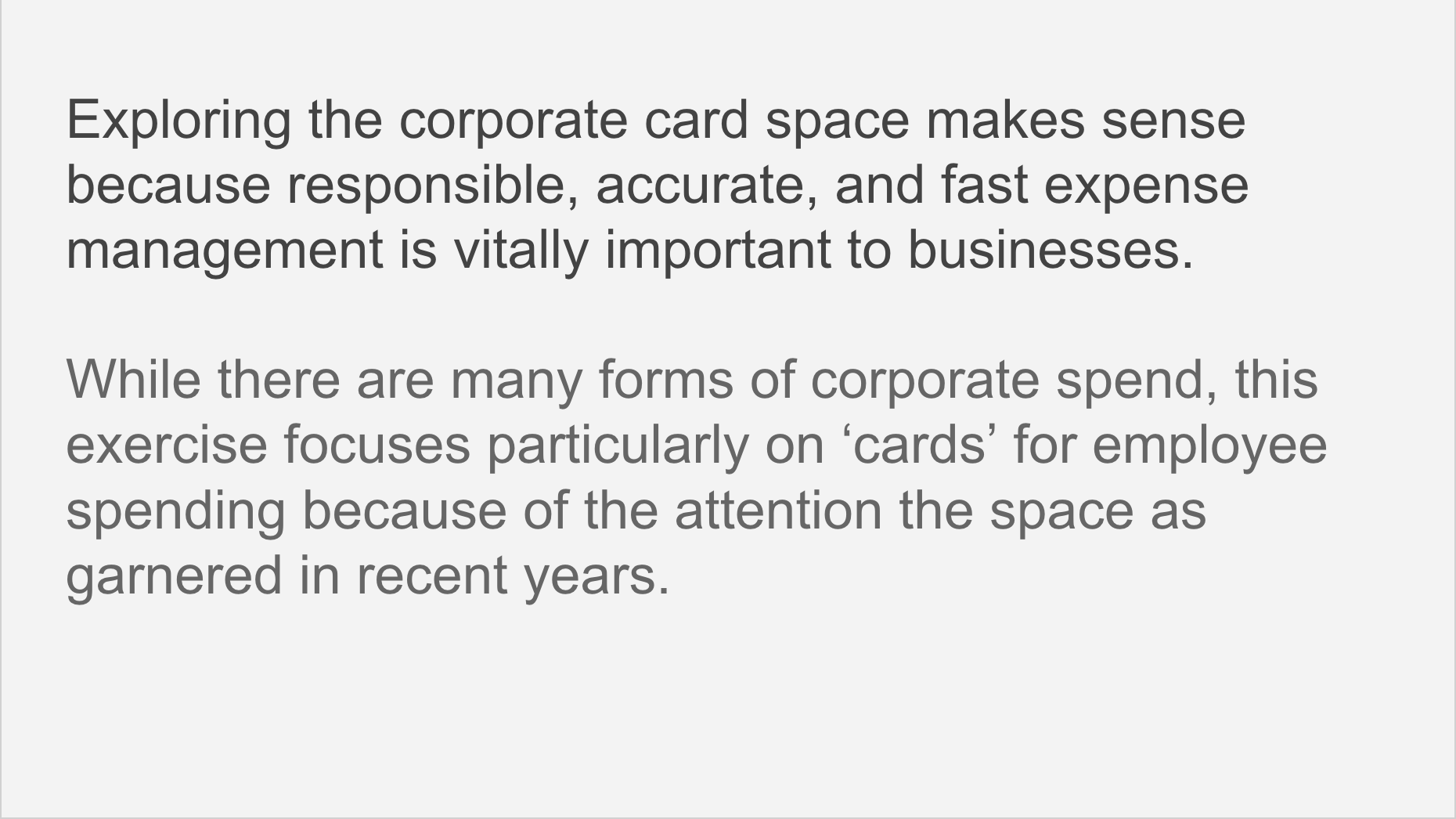
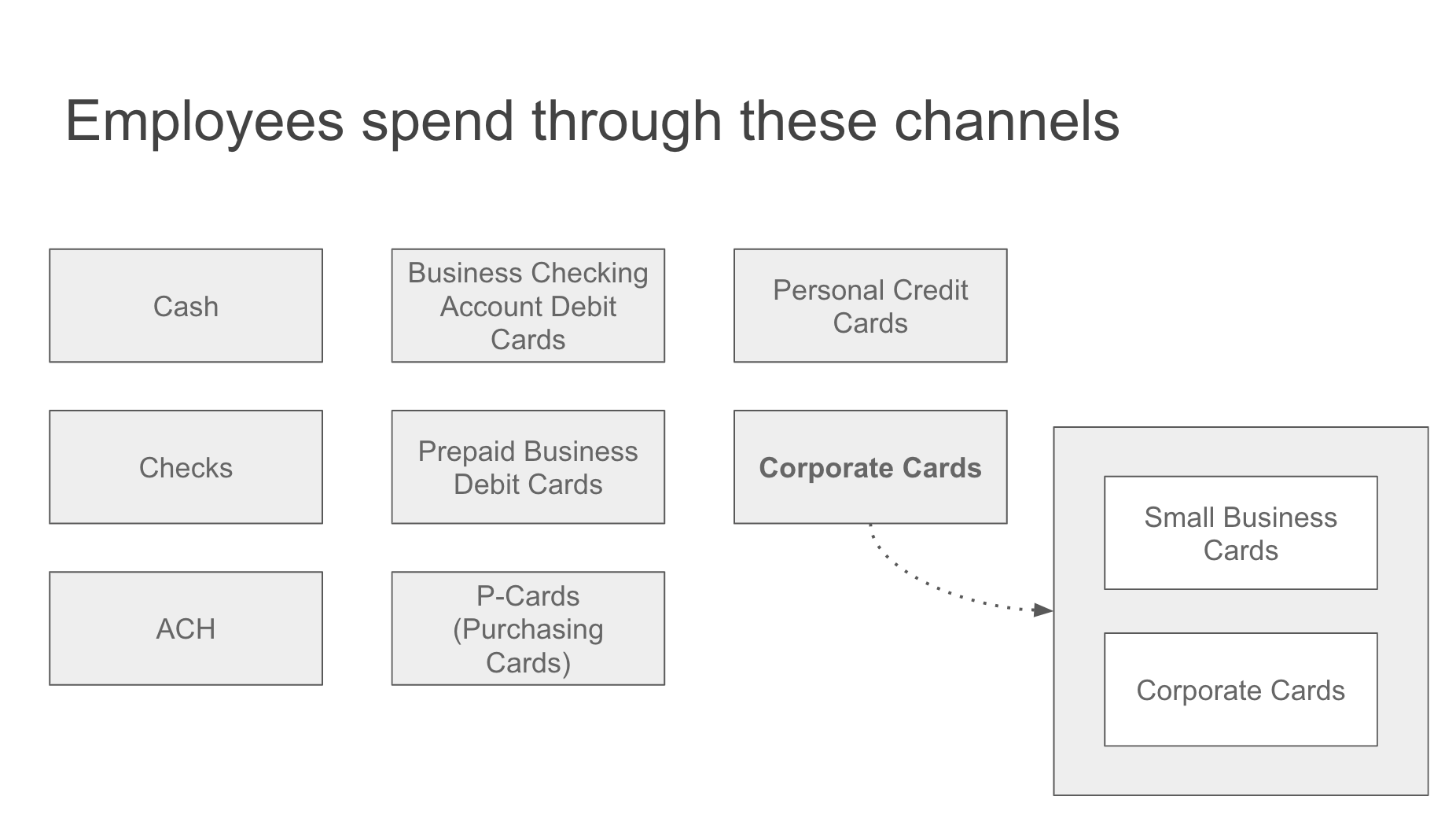
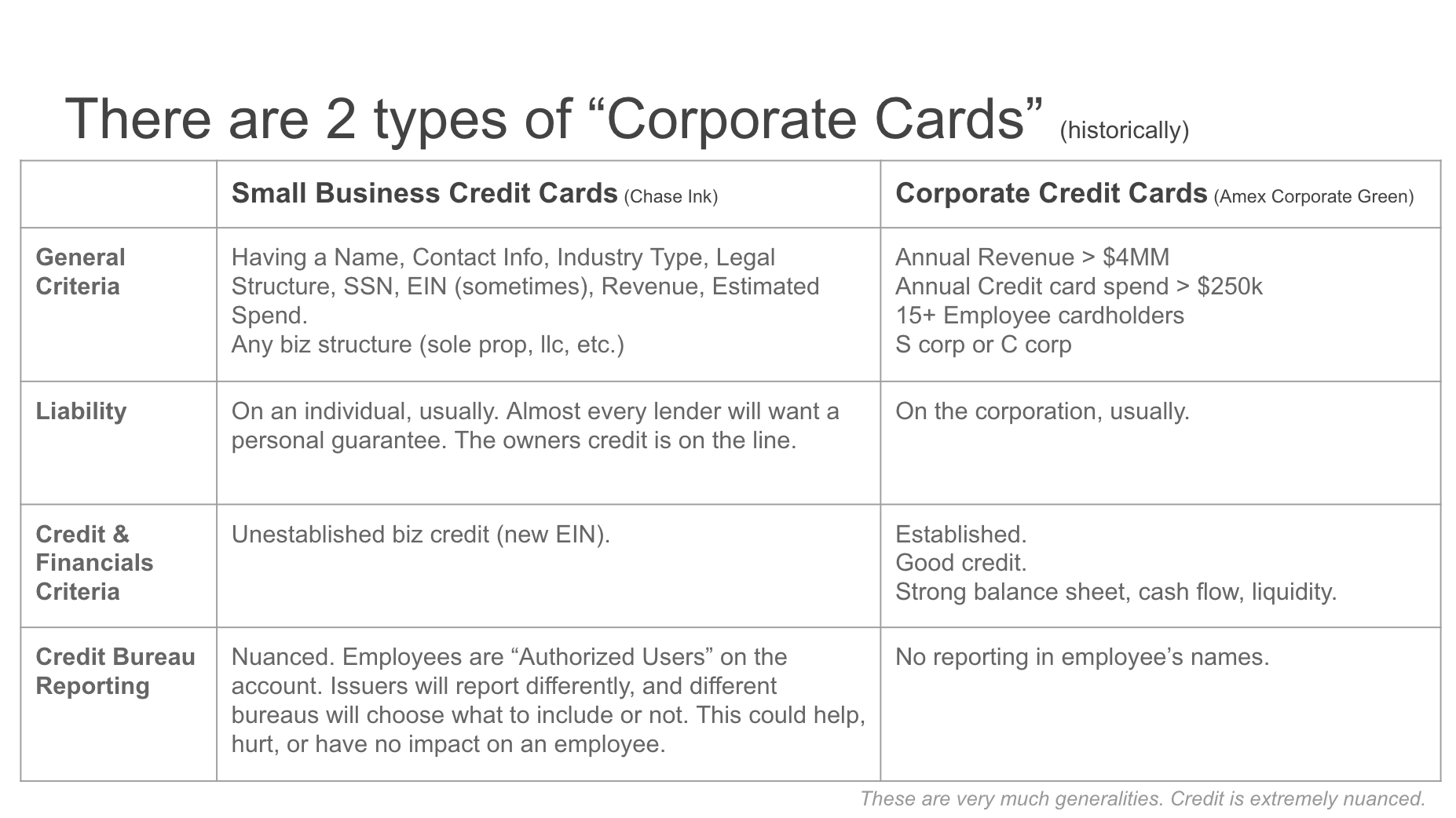
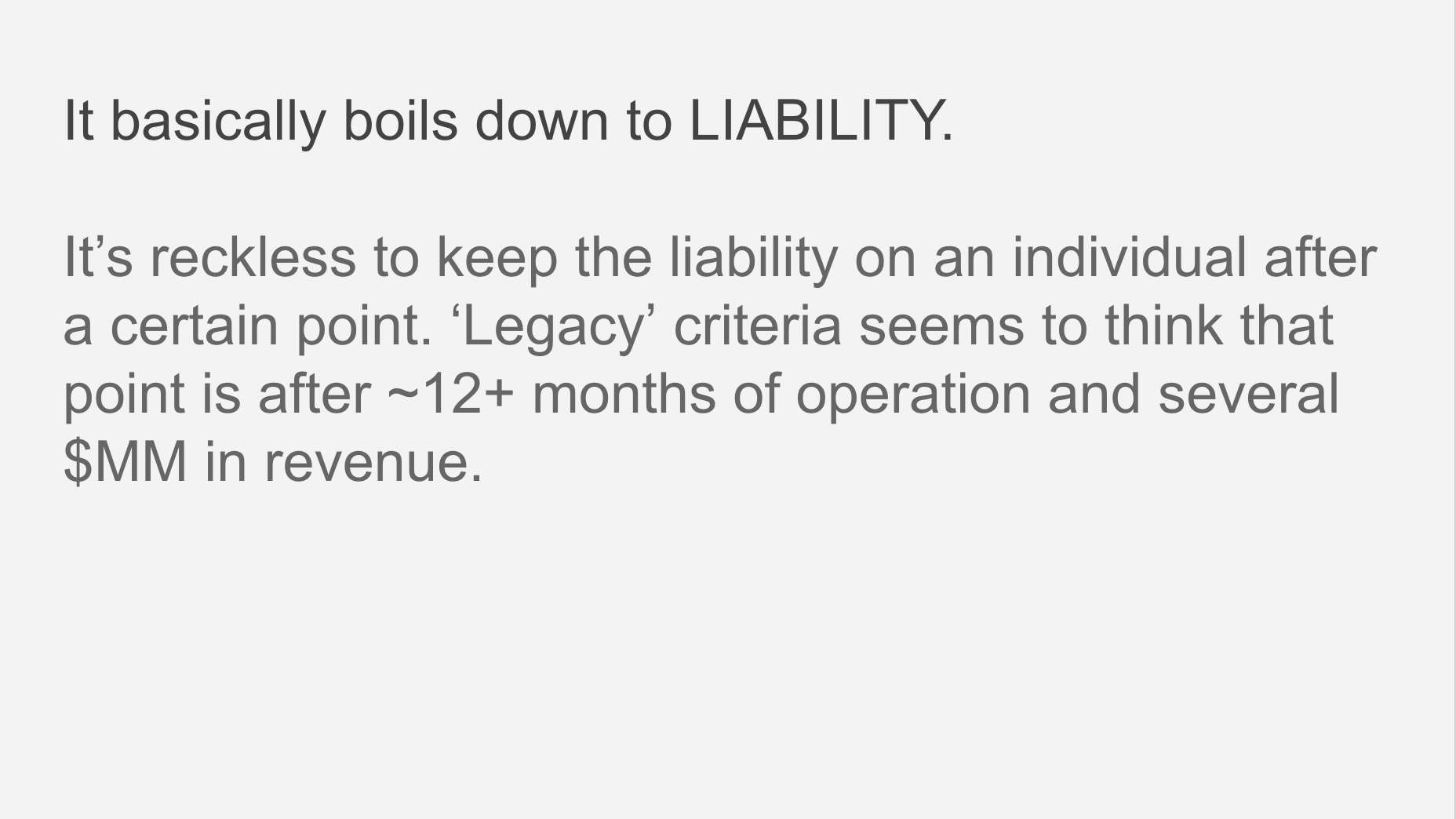
Competitive Landscape
Why is the space seemingly garnering more attention in recent years? Who are the new players? Who are the old players? What differentiates them from each other? Where are the significant opportunities for improvement?
These are the types of questions that need exploring to gain an understanding of the space. Most of my experience is in consumer credit (both Blispay and Bill Me Later/PayPal Credit were B2B2C businesses). I have no experience in the business lending space, so going through the thought exercise to tie corporate cards to expense management in the Background section was critical in helping me understand the big picture. Digging into the competitive landscape is an extension of that.
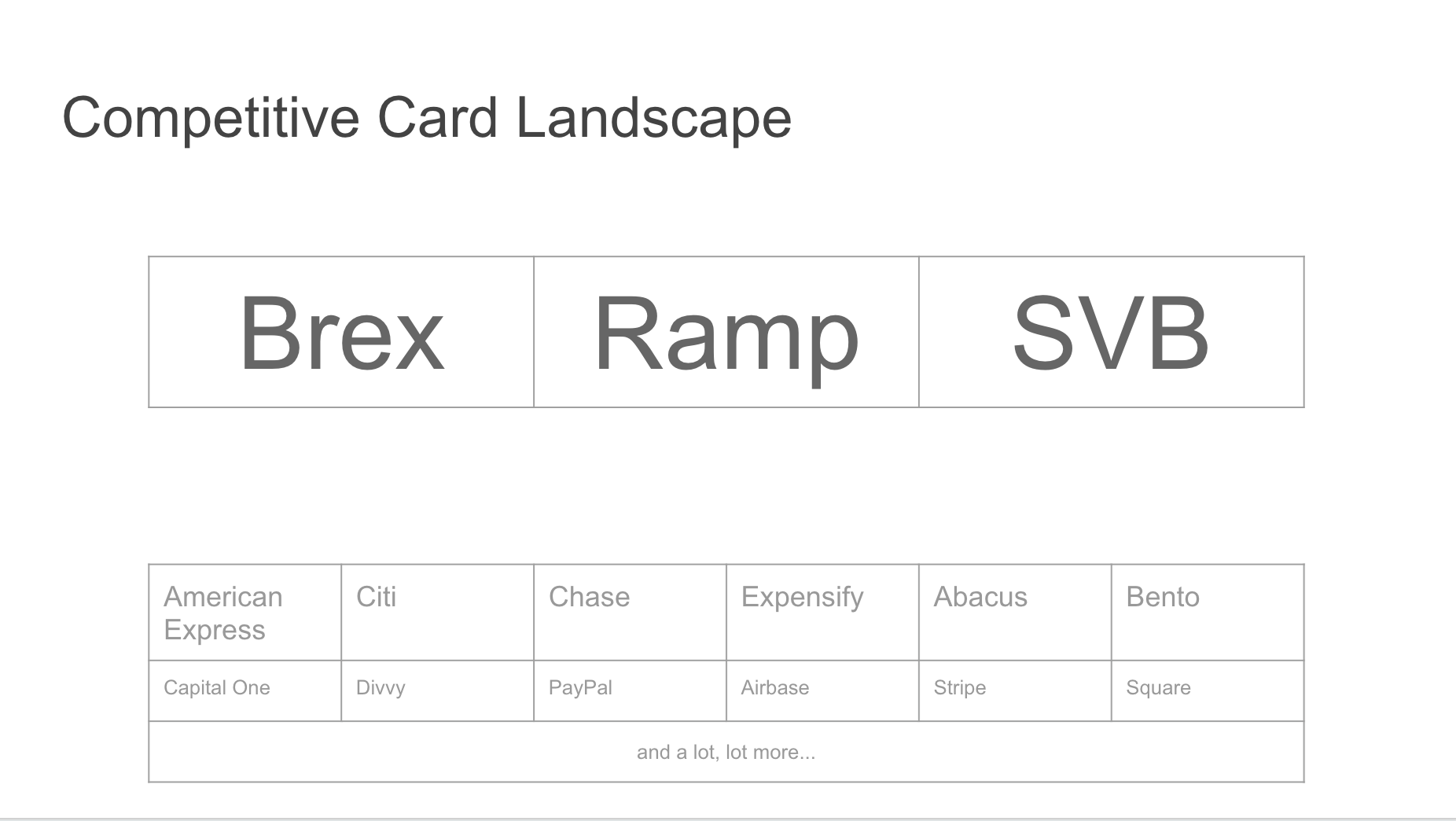
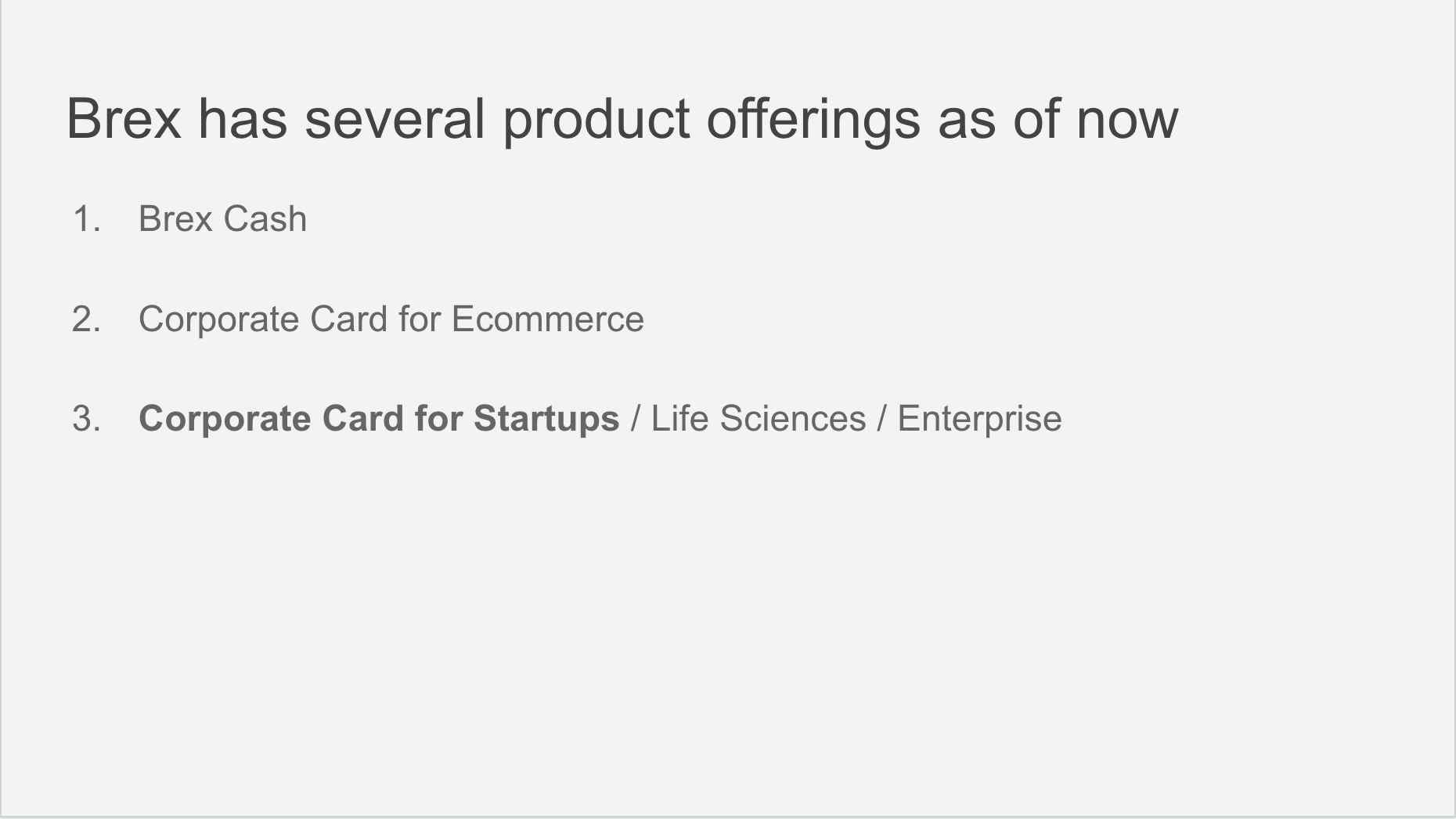
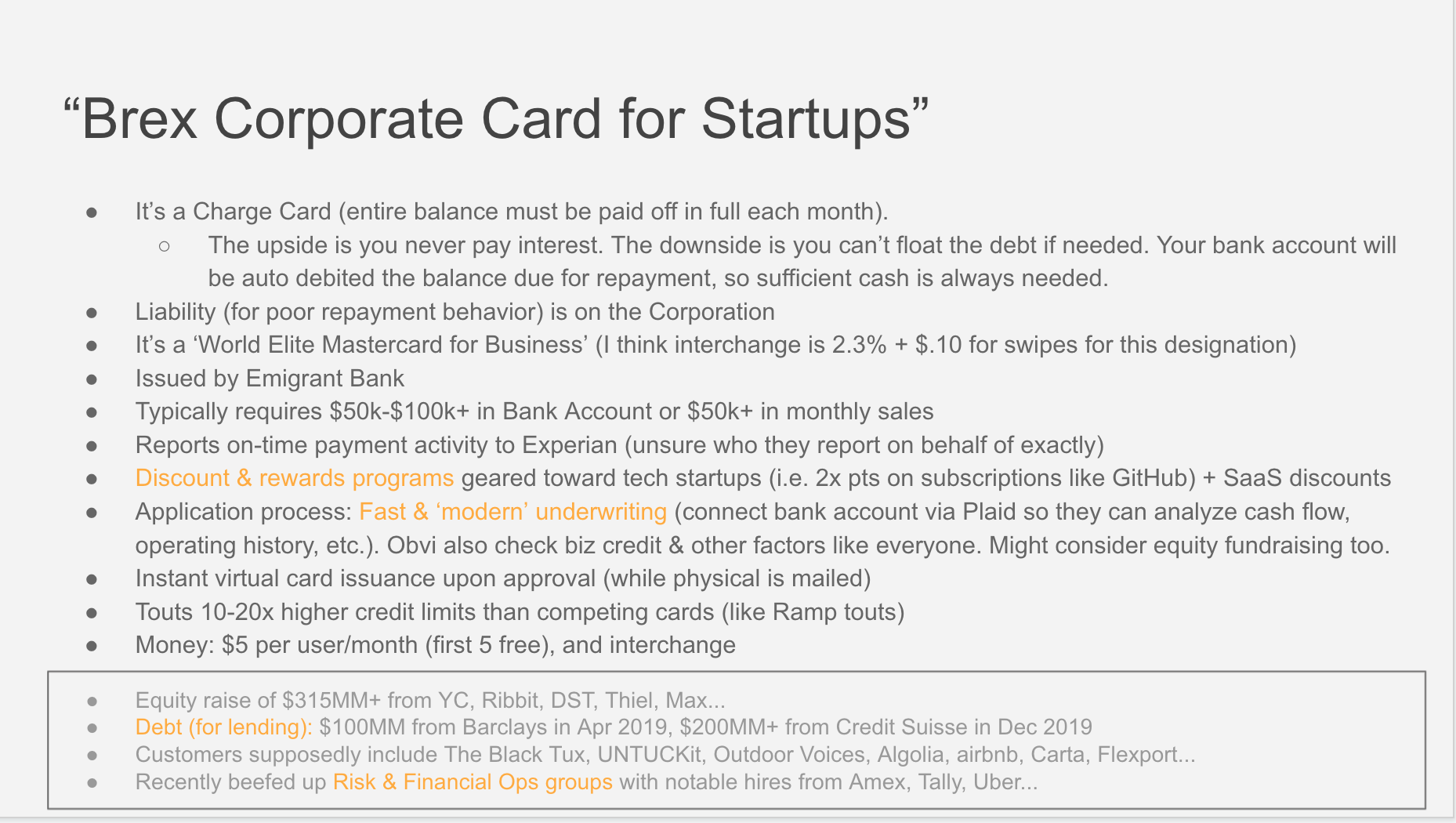
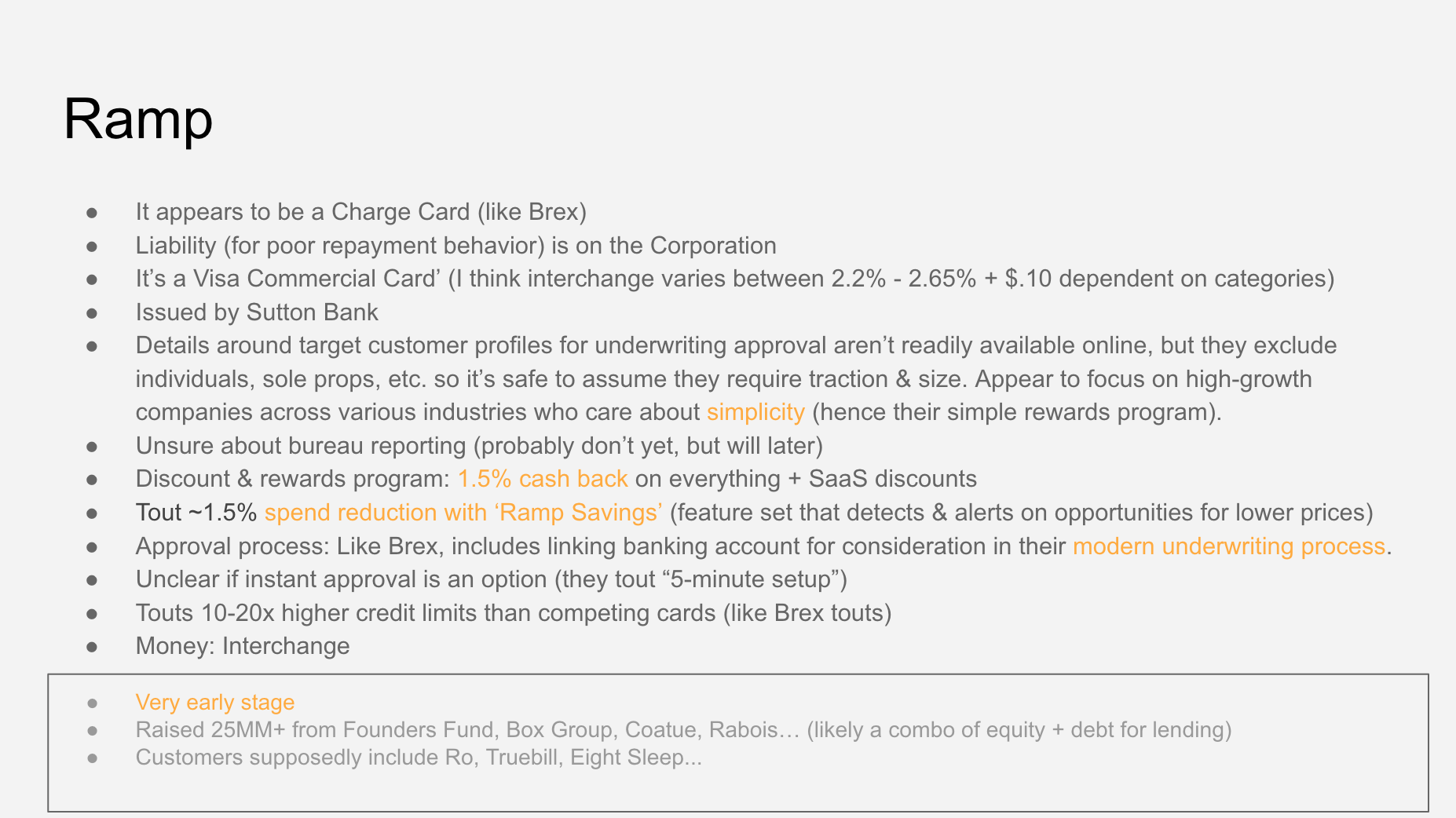
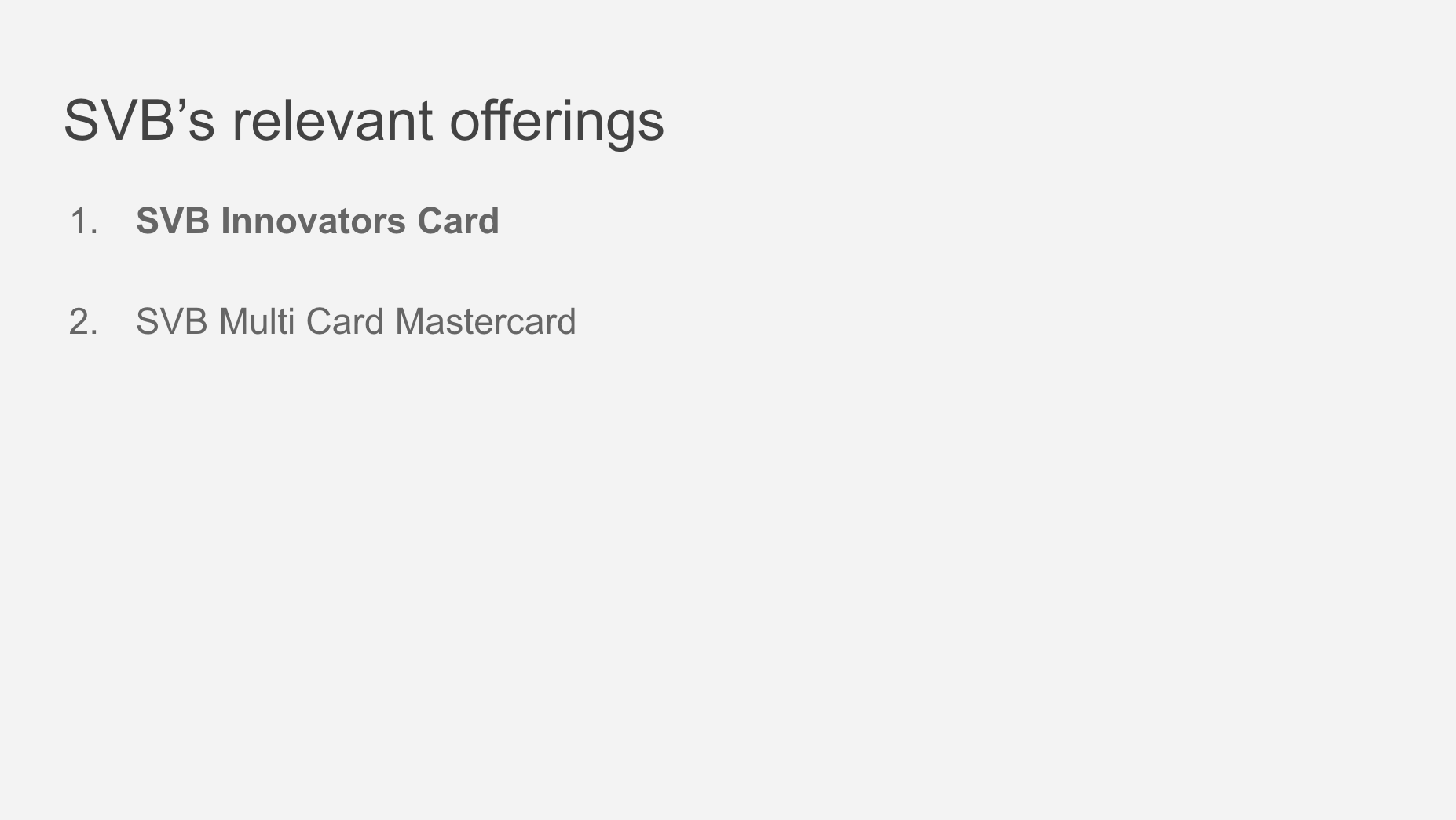
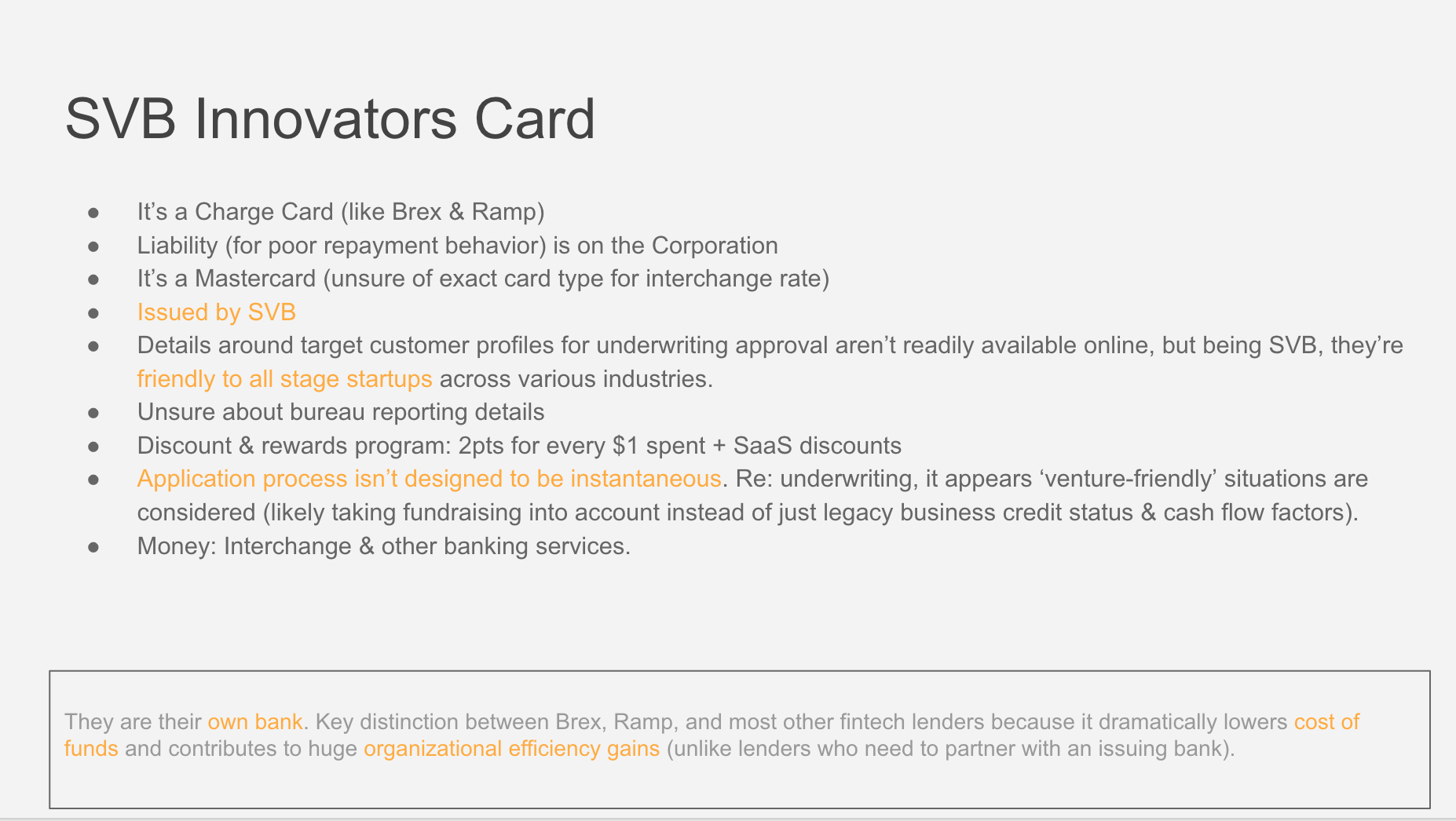
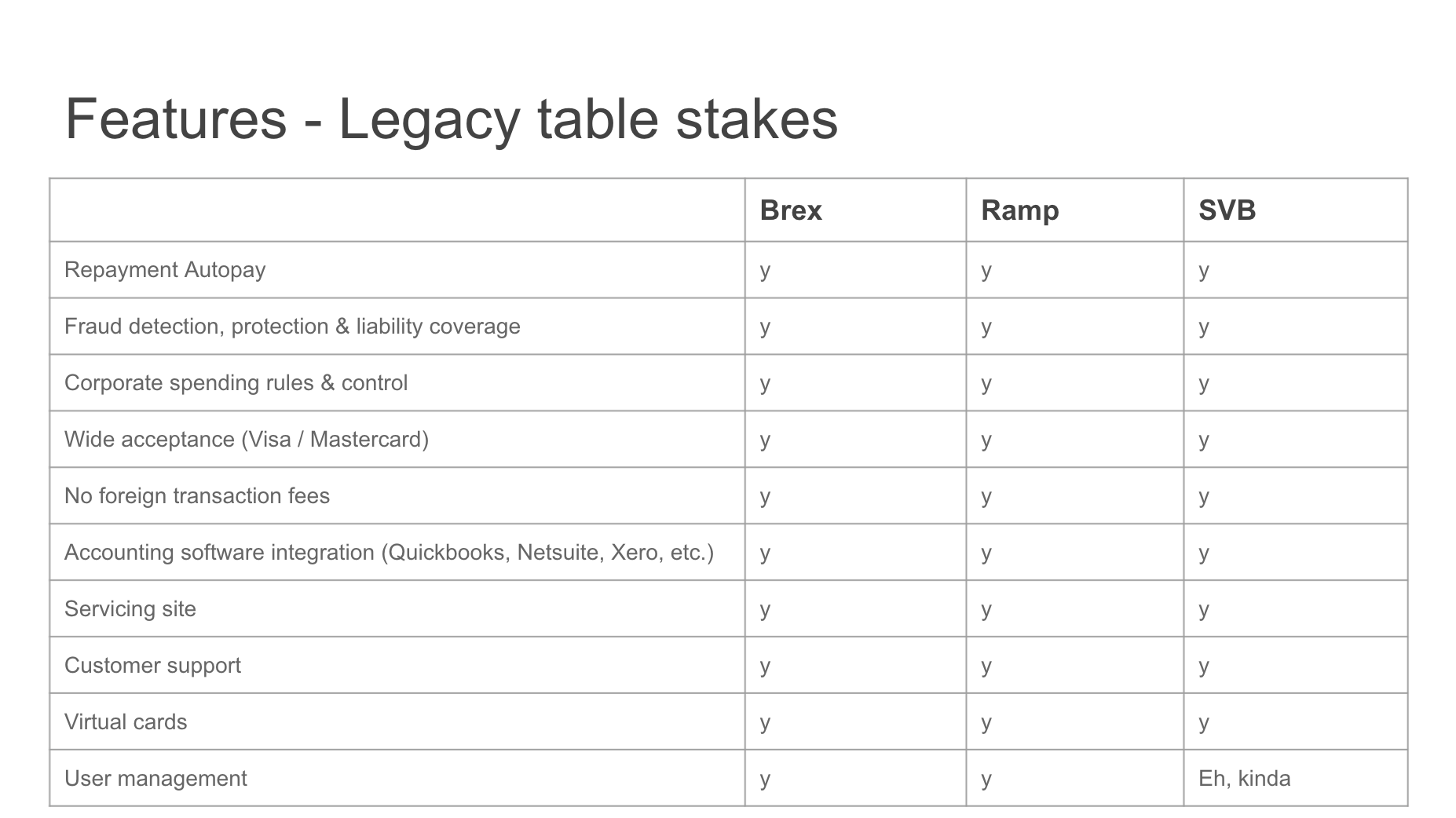
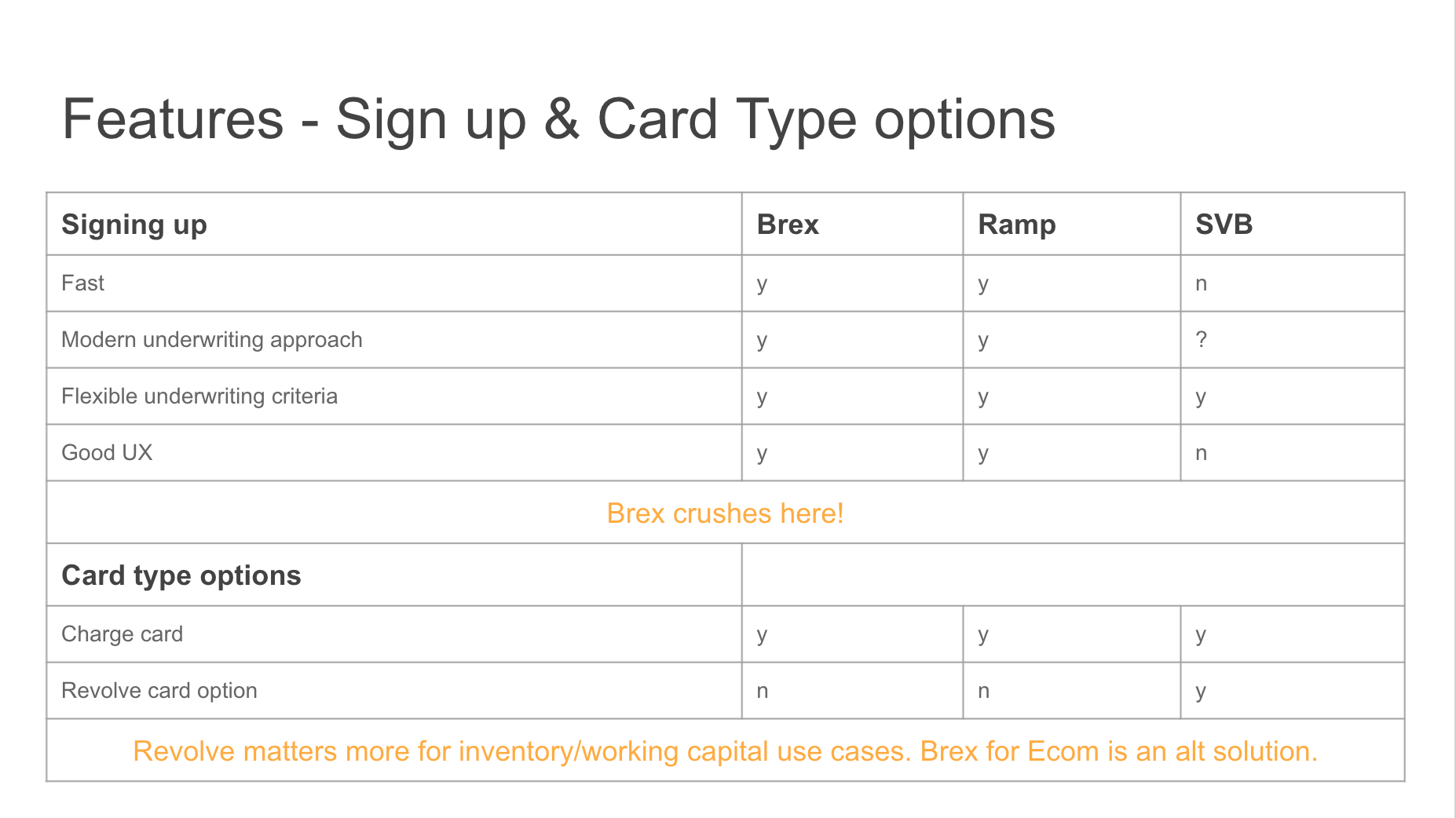
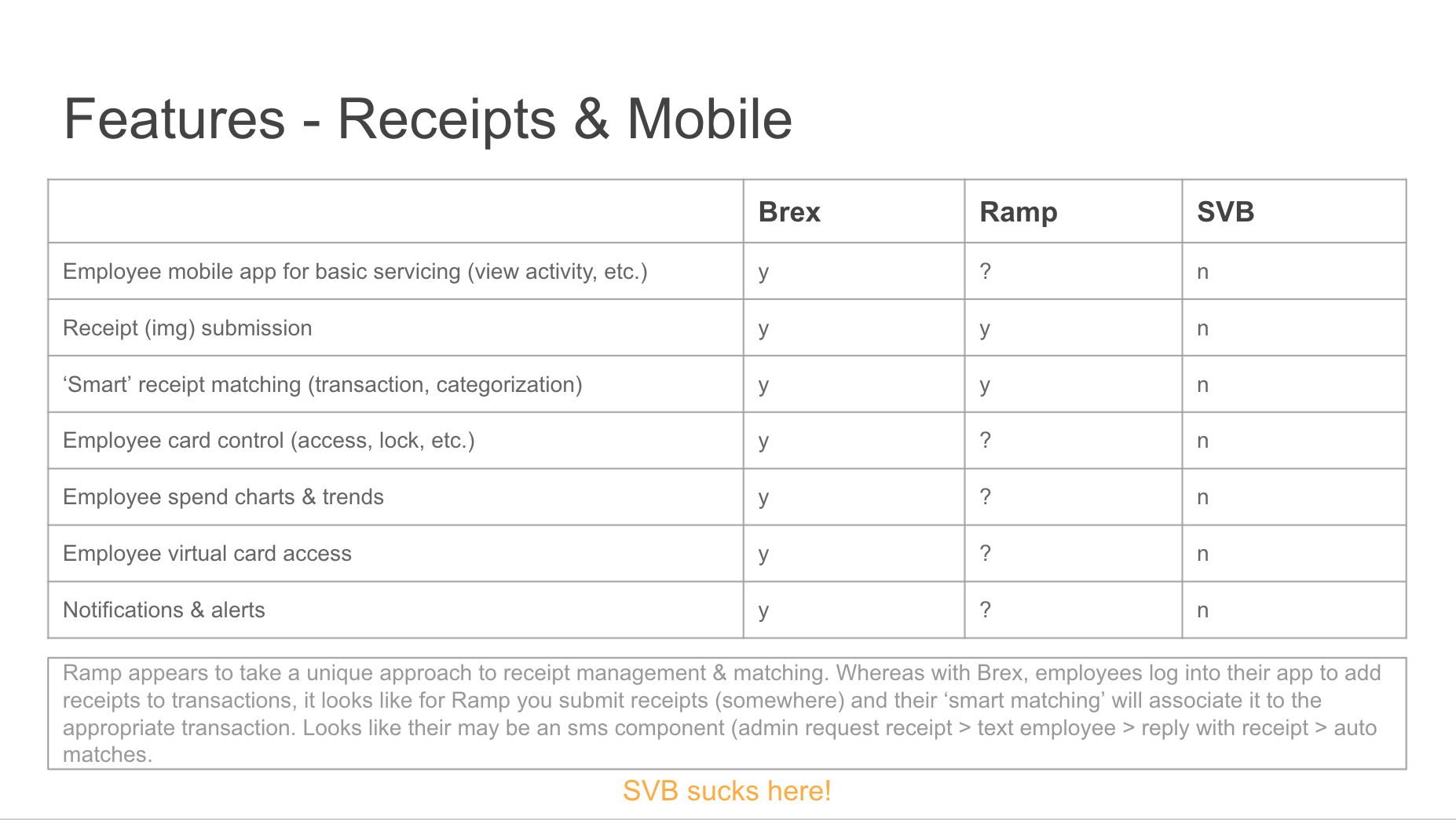
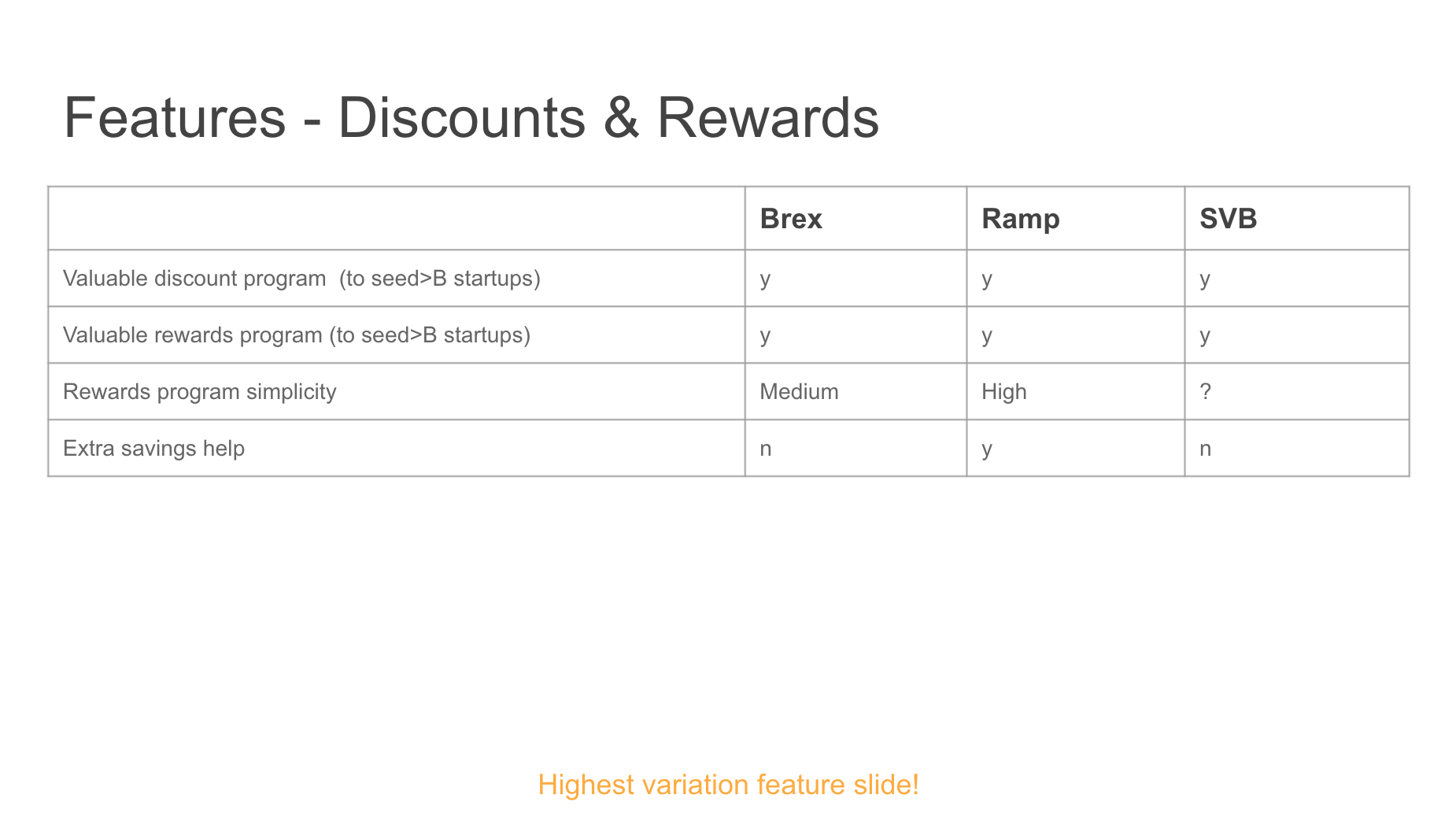
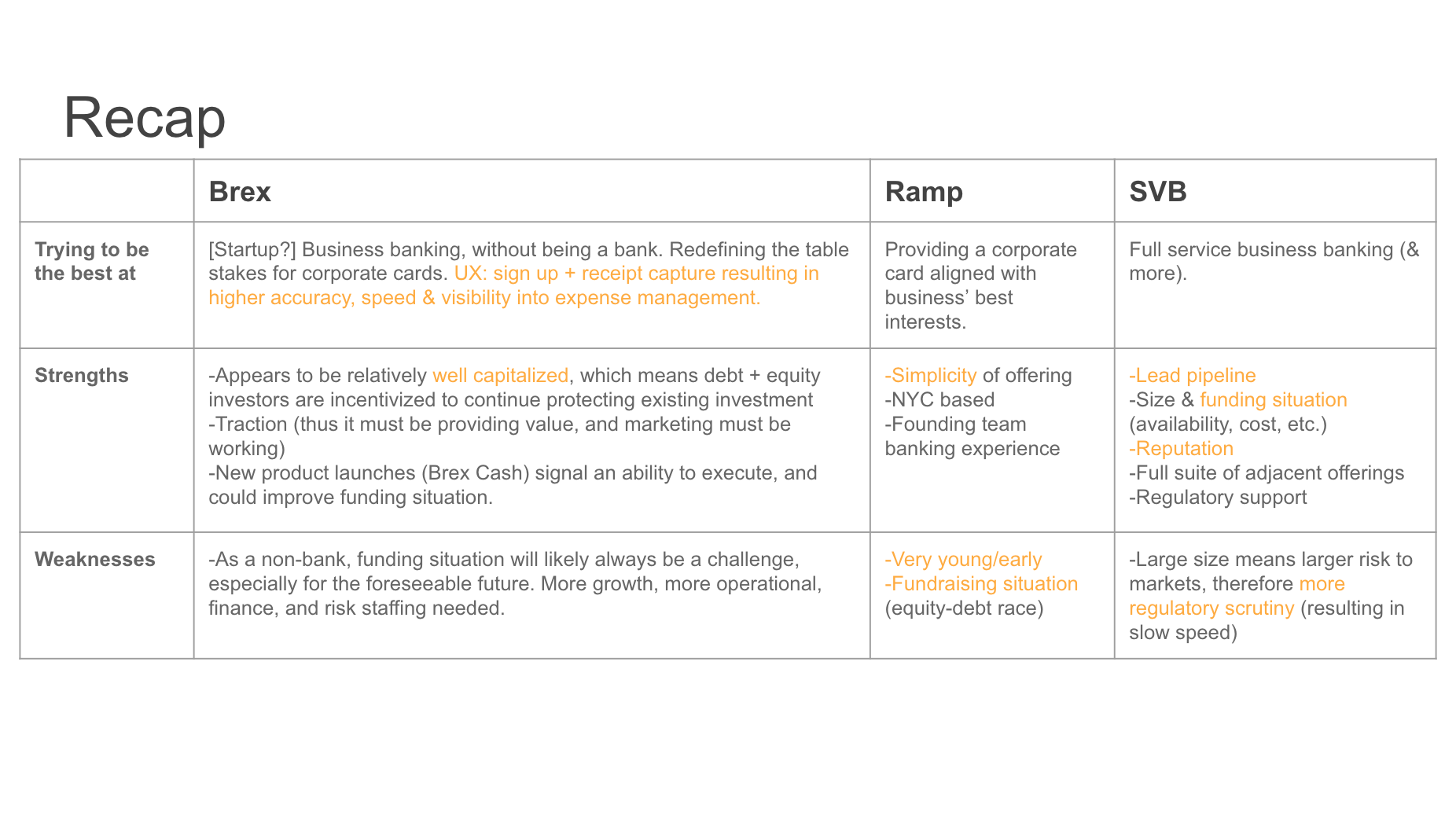
User Interviews
There’s no replacement for speaking with potential customers, users of competing products, experts, novices, or anyone who has had to think about the thing you’re researching. The biggest issue with interviews is time. But you’ll rarely regret chatting with customers. It’ll speed up your research dramatically, and usually, they’ll come up with all the best ideas for you without even realizing it.
And just like that, it became apparent why Brex and Ramp have not only entered this space but have attracted mucho $$$– there’s a real opportunity to redefine the table stakes for the corporate card space. It’s time for modernizing, and it’s a big enough space for many new entrants to participate. But there is also a lot of opportunity for the incumbents. There will be some interesting partnerships and M&A in the next few years.
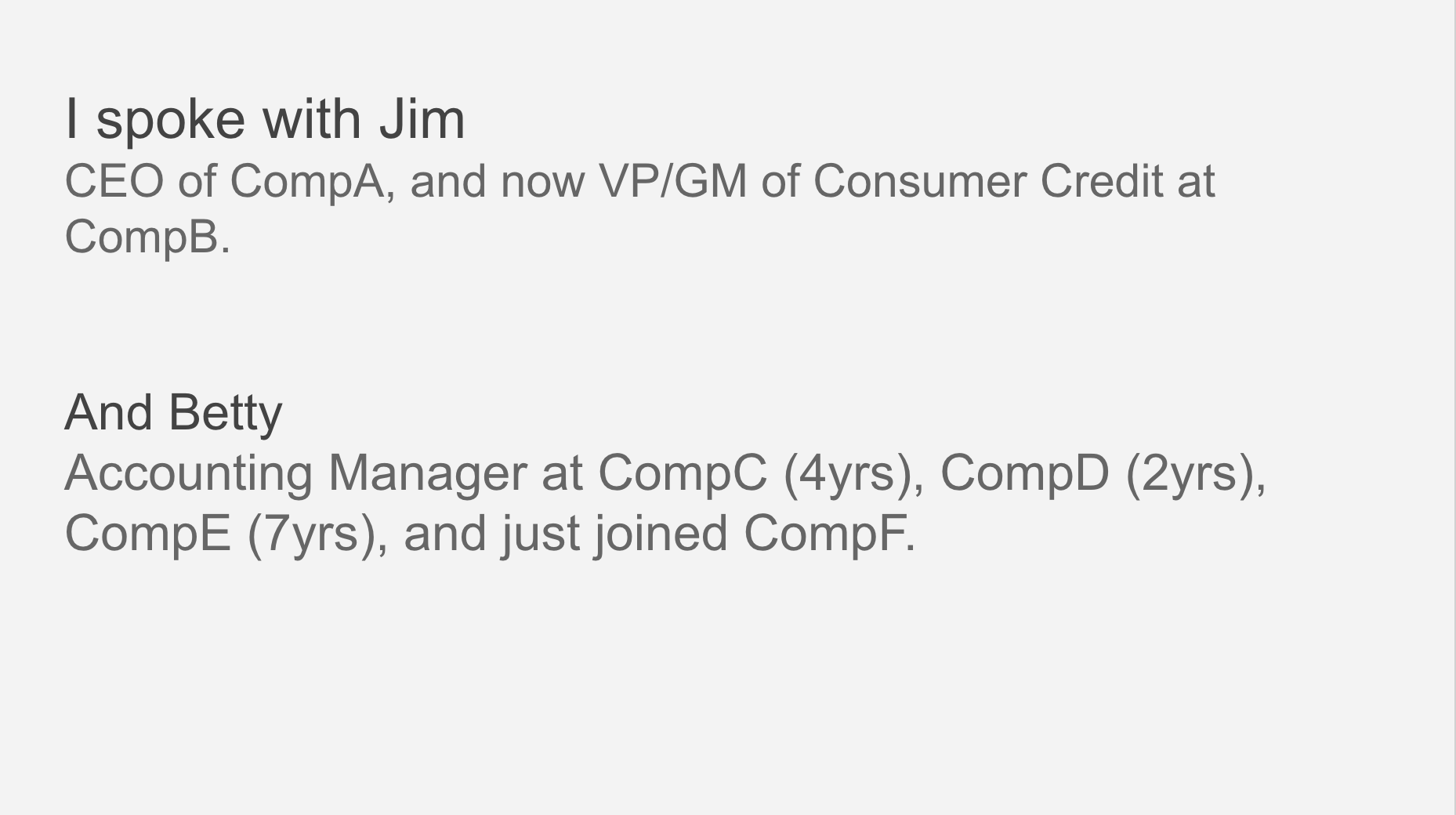
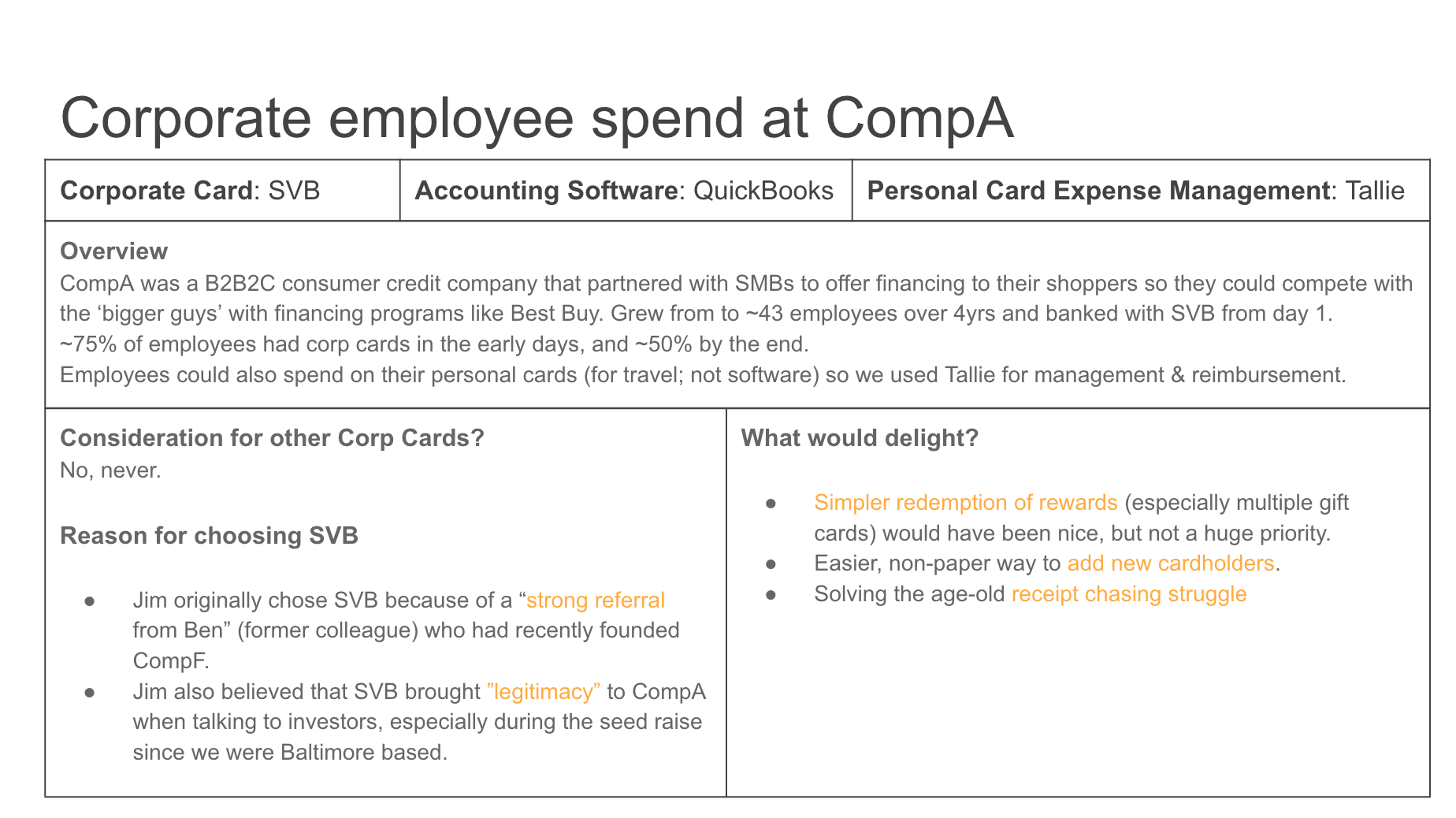
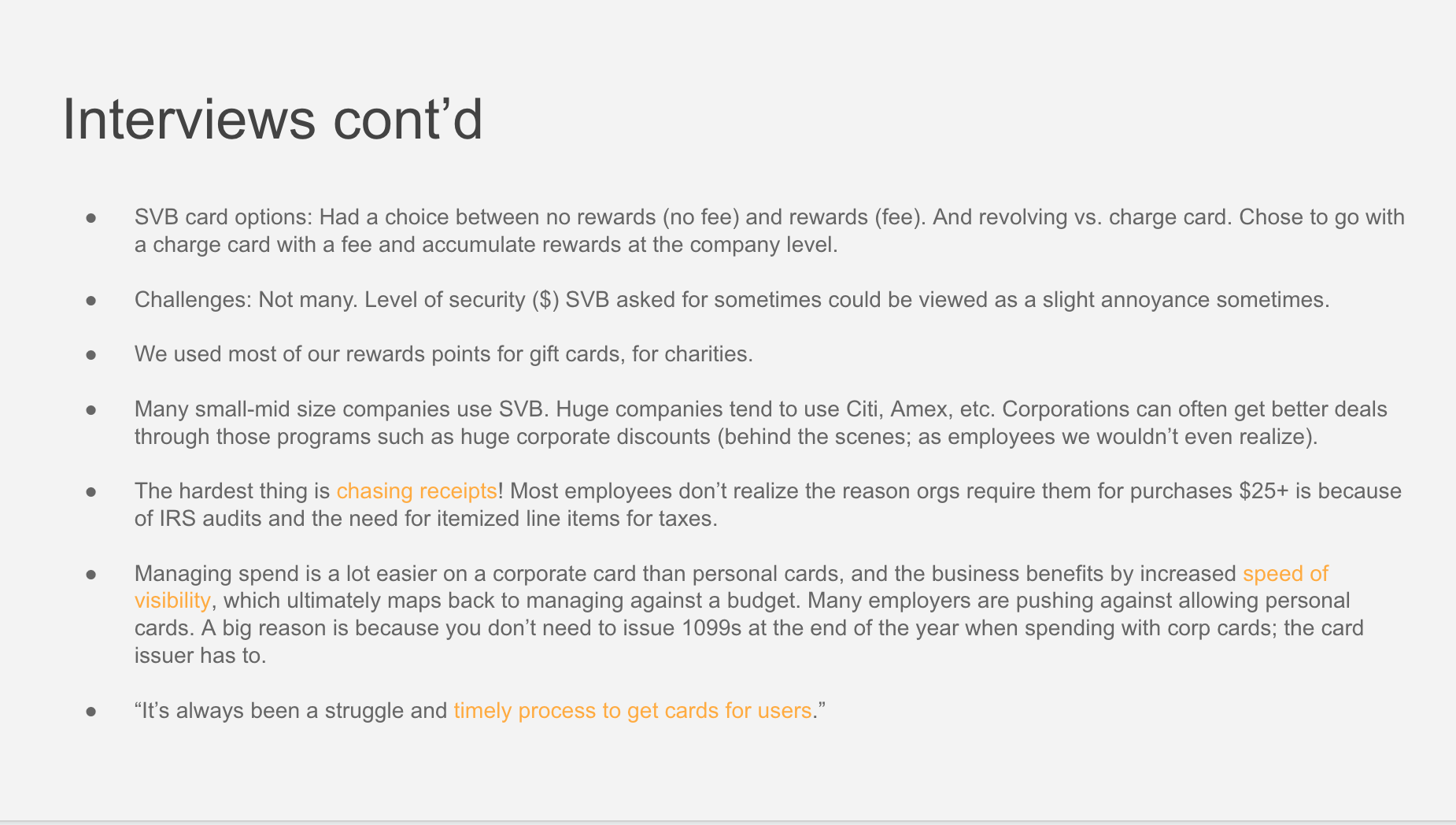
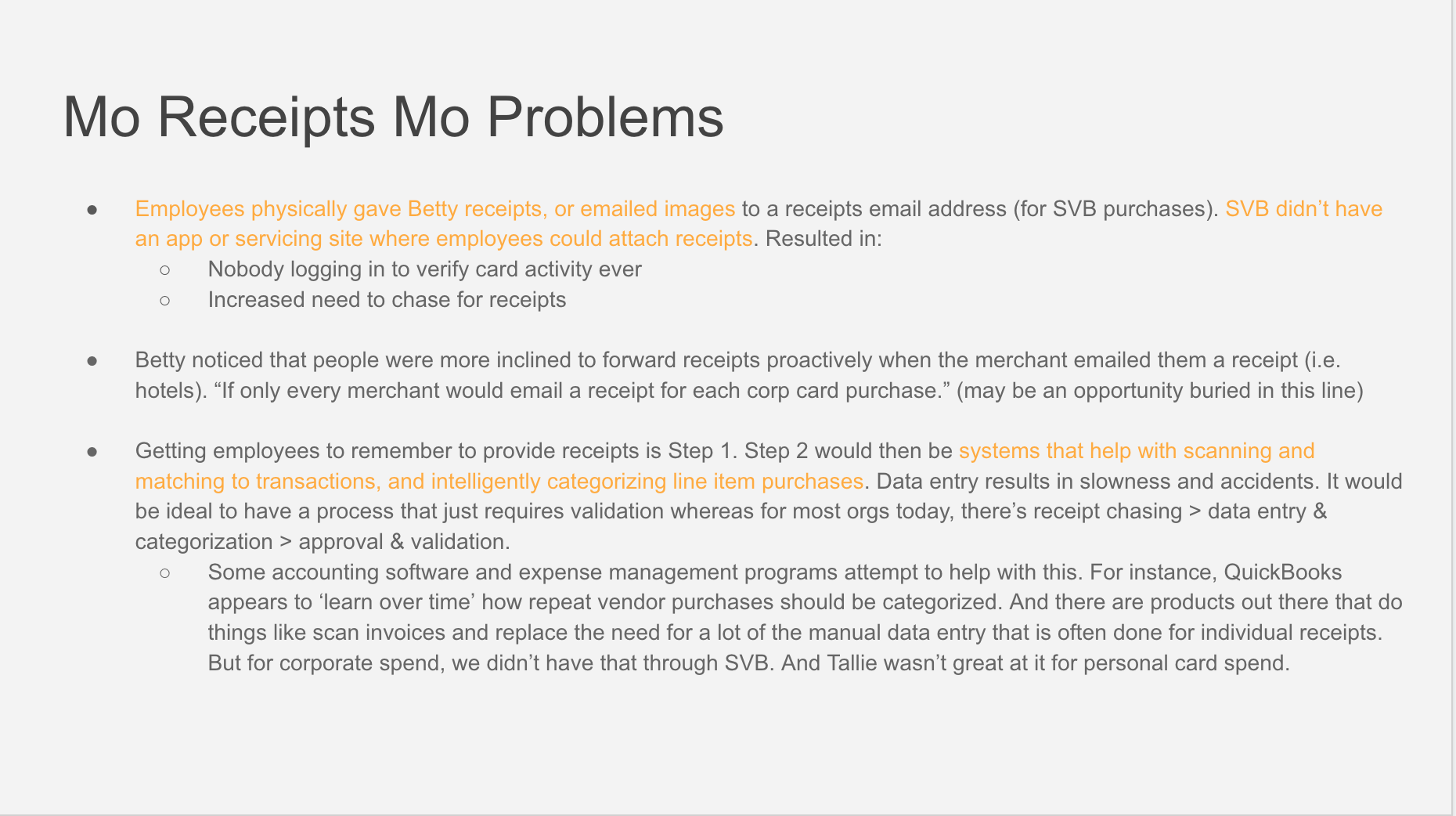
New Product Time
So, we’ve grounded ourselves in the problem and learned there’s an opportunity. We believe there’s enough room for more players. Now it’s time to identify a new product construct that could fill a need and be desirable by end customers. This is obviously IMPOSSIBLE to do effectively in under a couple of hours, so keep in mind this is just an exercise. I don’t love my idea and I’m sure there are financial, tax, and legal reasons why it might not even be realistic.
Alright… magic! We’ve defined a new product. We’ve identified the value prop (a win-win between businesses and their employees), we’ve identified the high-level features, chunks of development work that will need to be done (although completely oversimplified), and important partnerships we’d have to establish if they don’t already exist.

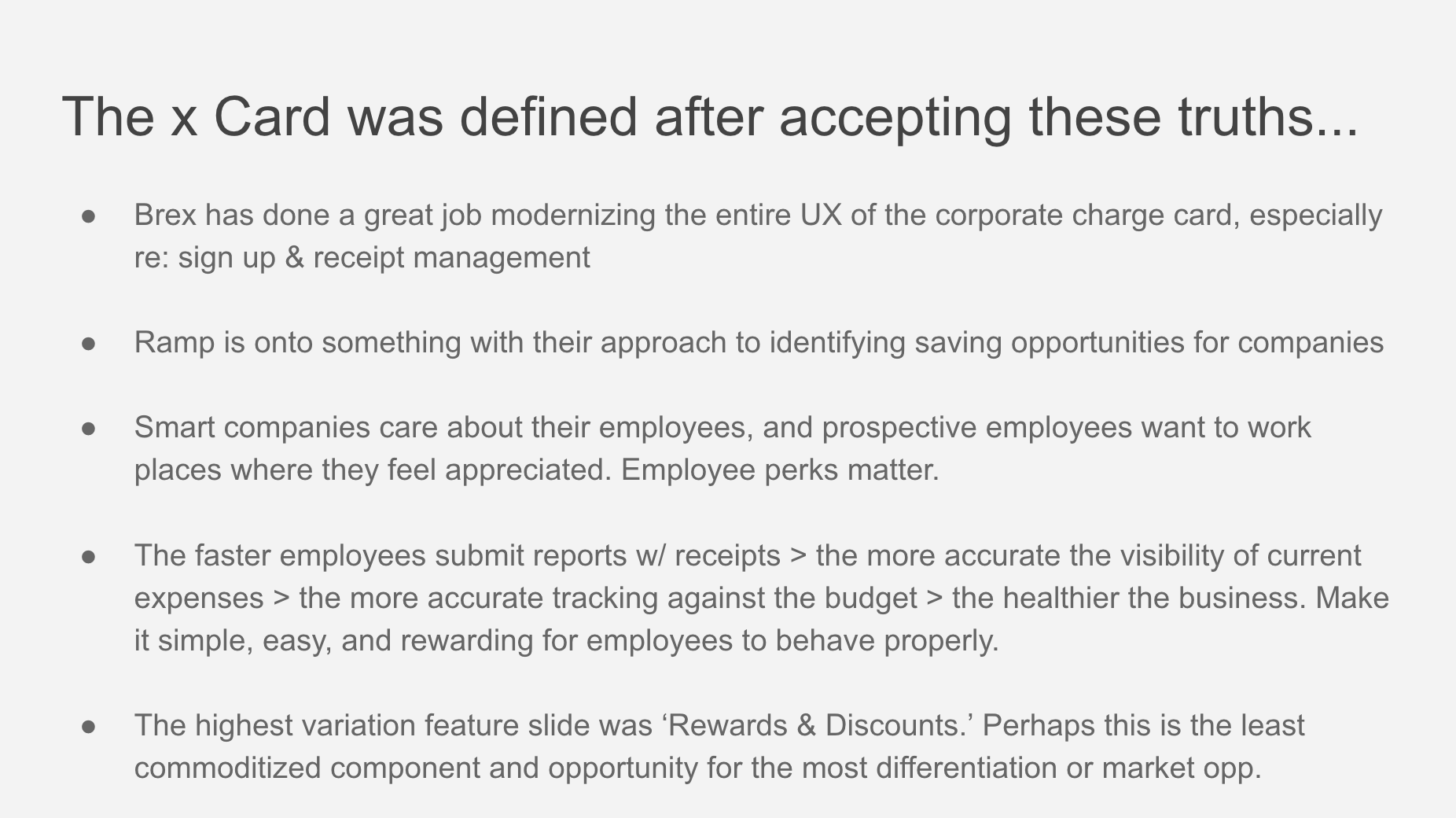
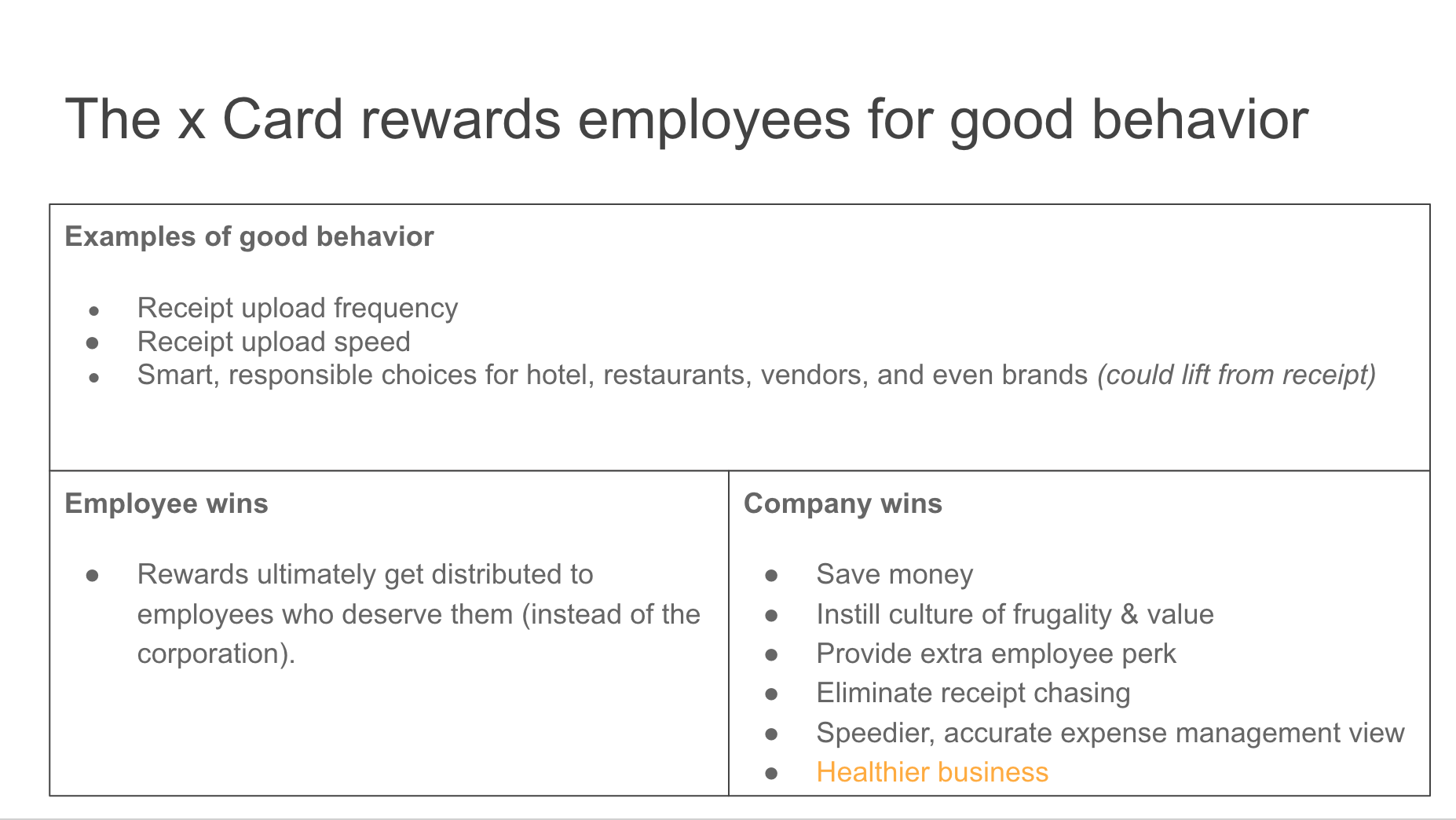
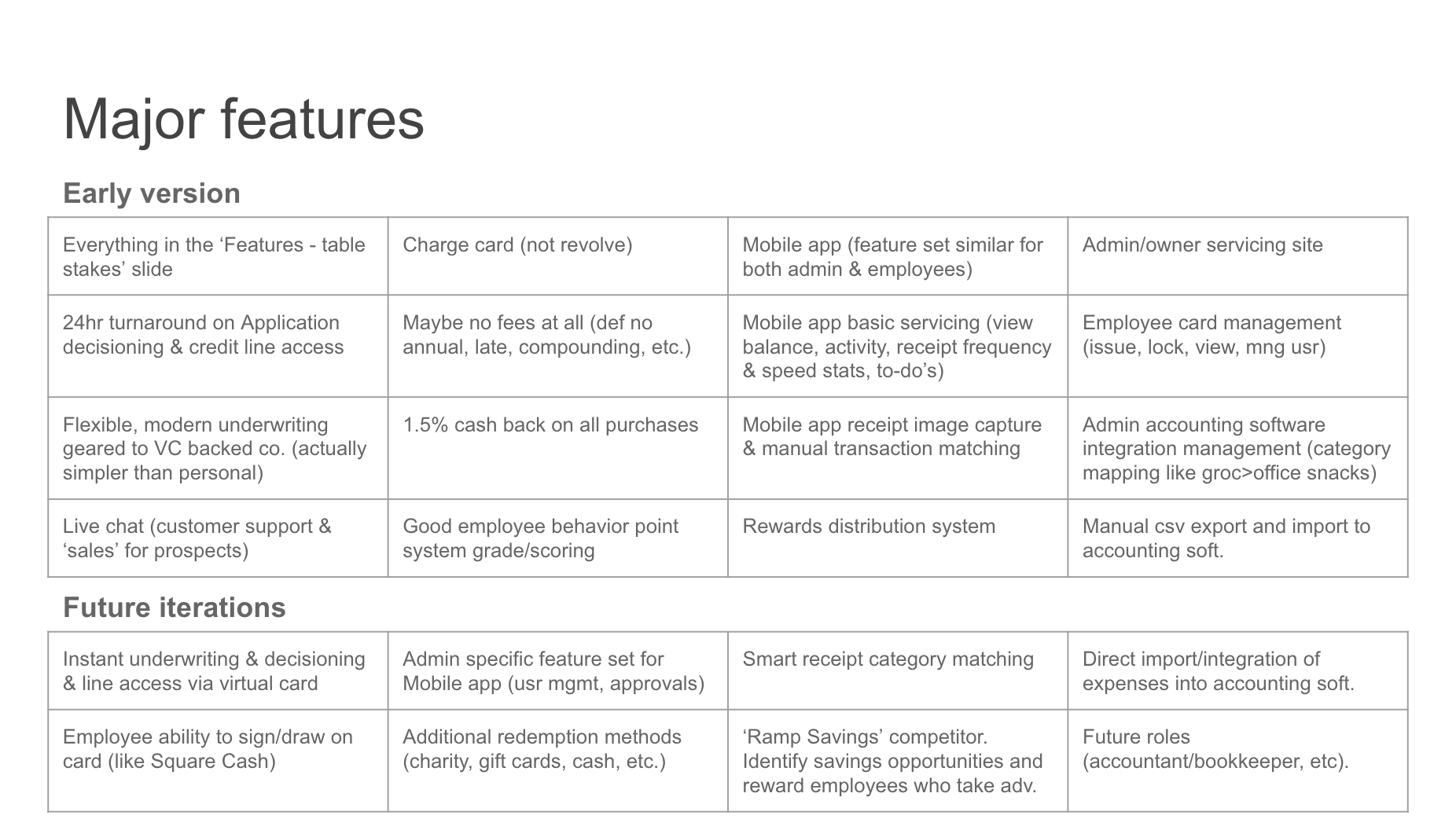
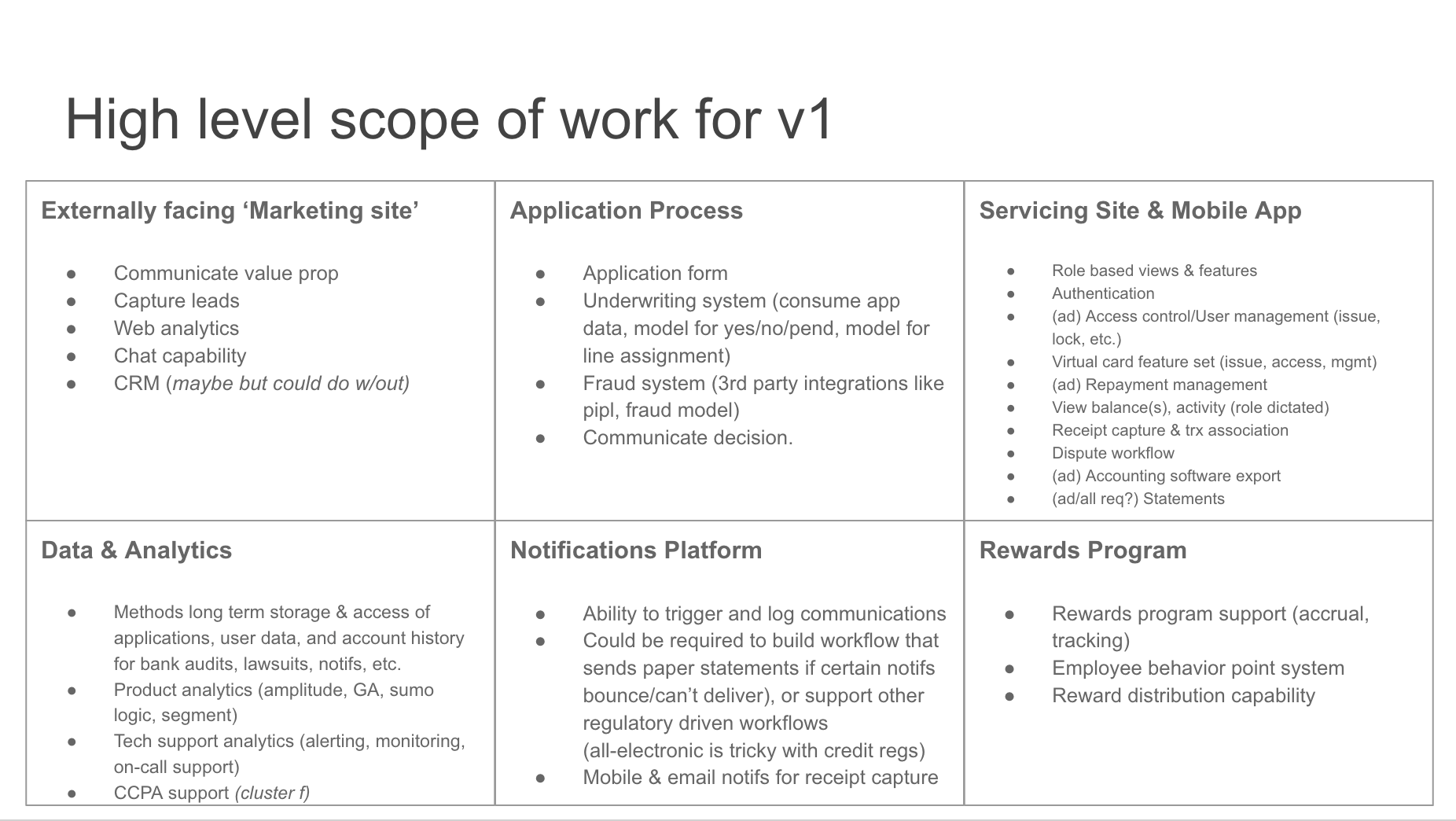
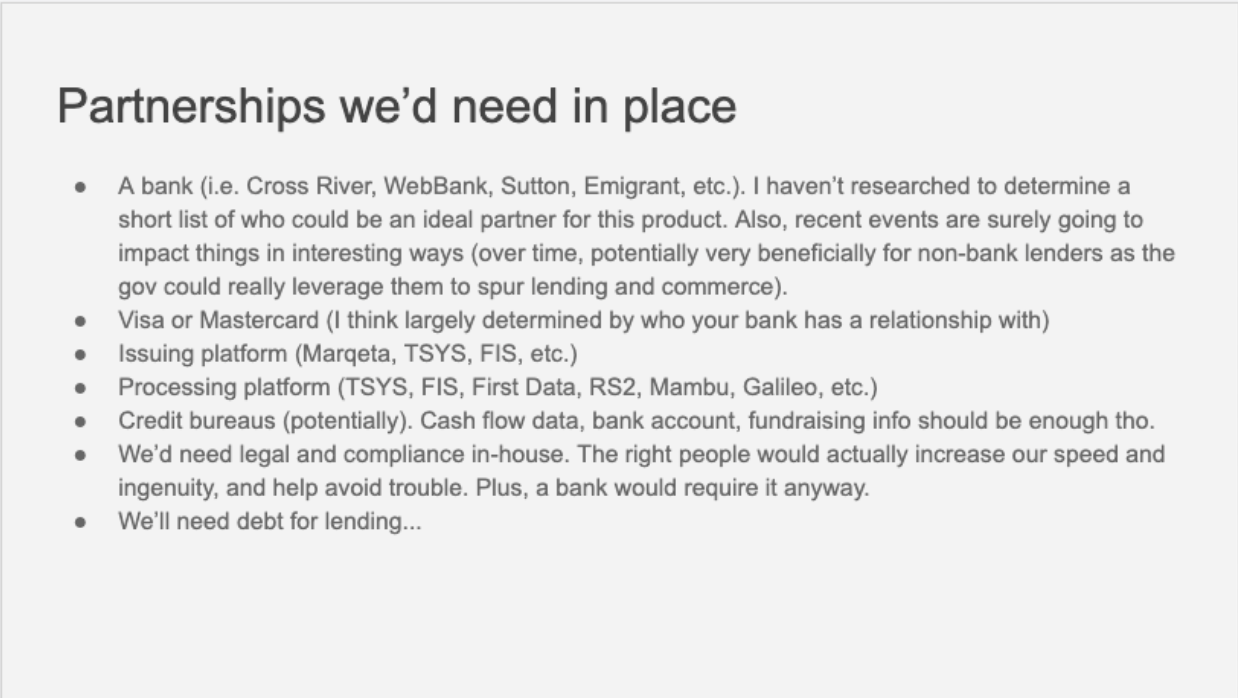
Bring it to Life
I believe the most beautiful corporate card is one that’s near-invisible. I don’t think business operators want to have to think about this part of their operation at all. They just want to be able to get one quickly that meets their needs, have someone manage their employees’ access, and have it all tied to their expense management and accounting software seamlessly. It should be near-invisible. BUT, people like seeing things, which is why product managers lean on drawing and wireframing so often before roping in their UX buds.


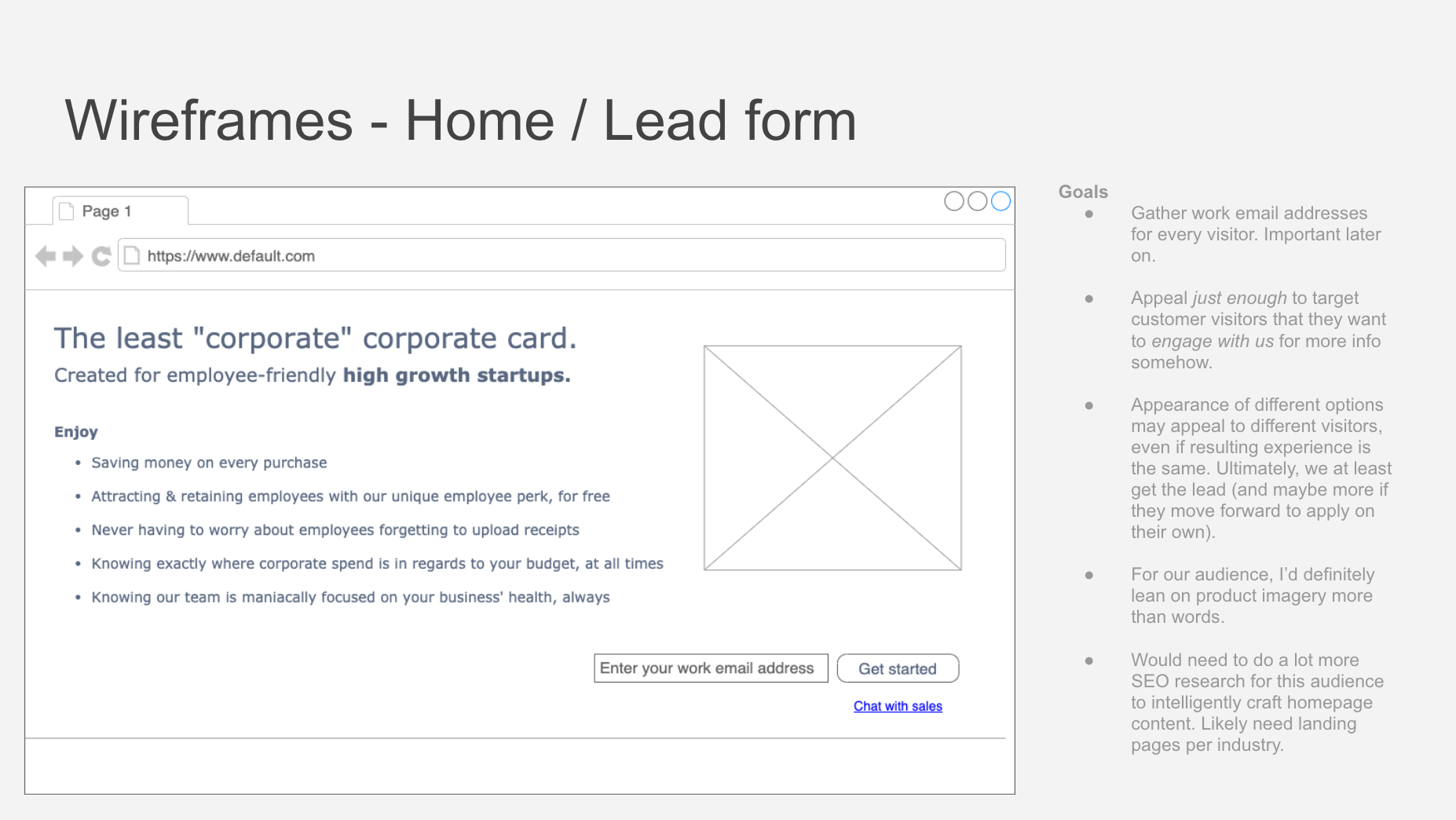
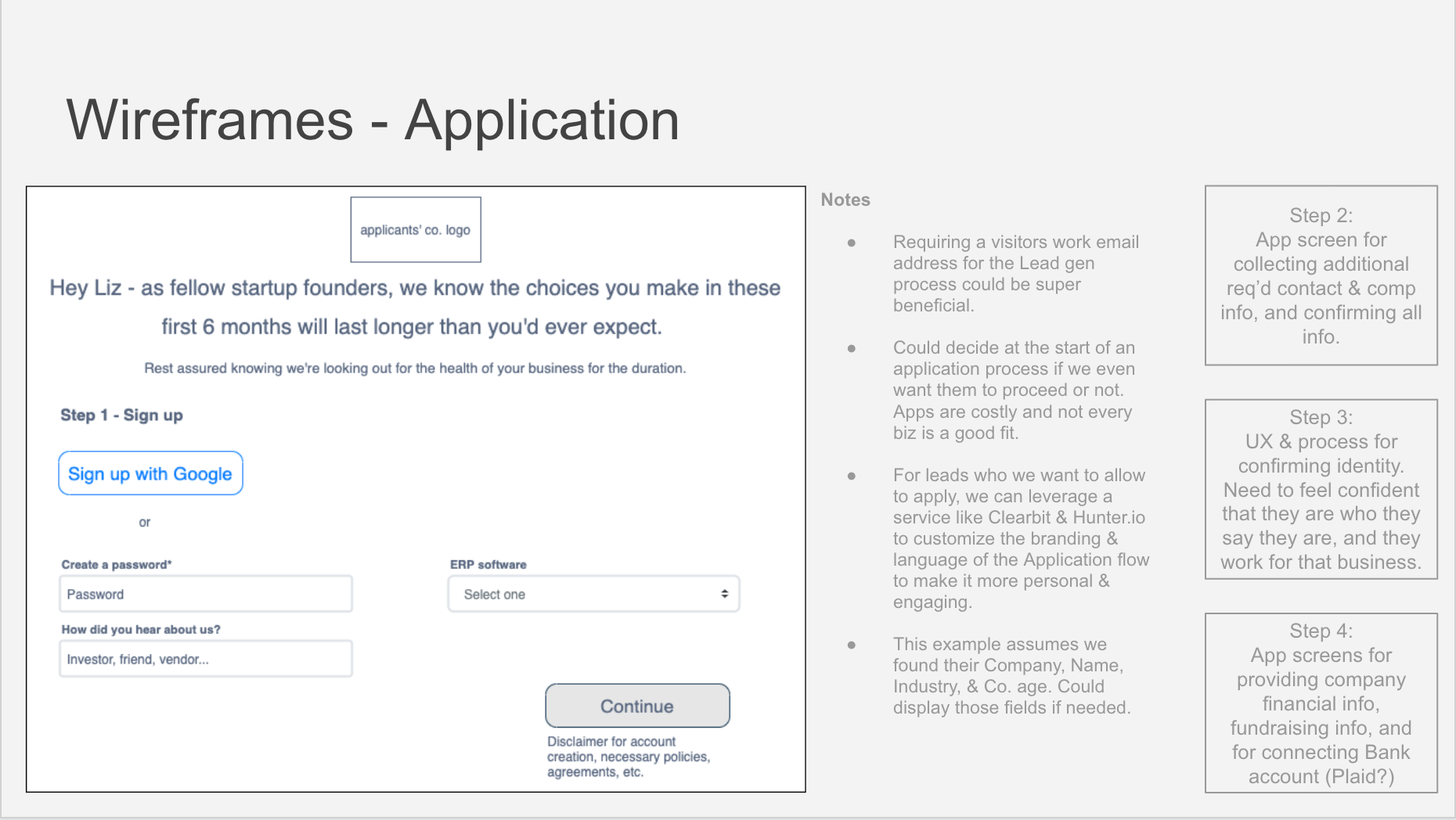
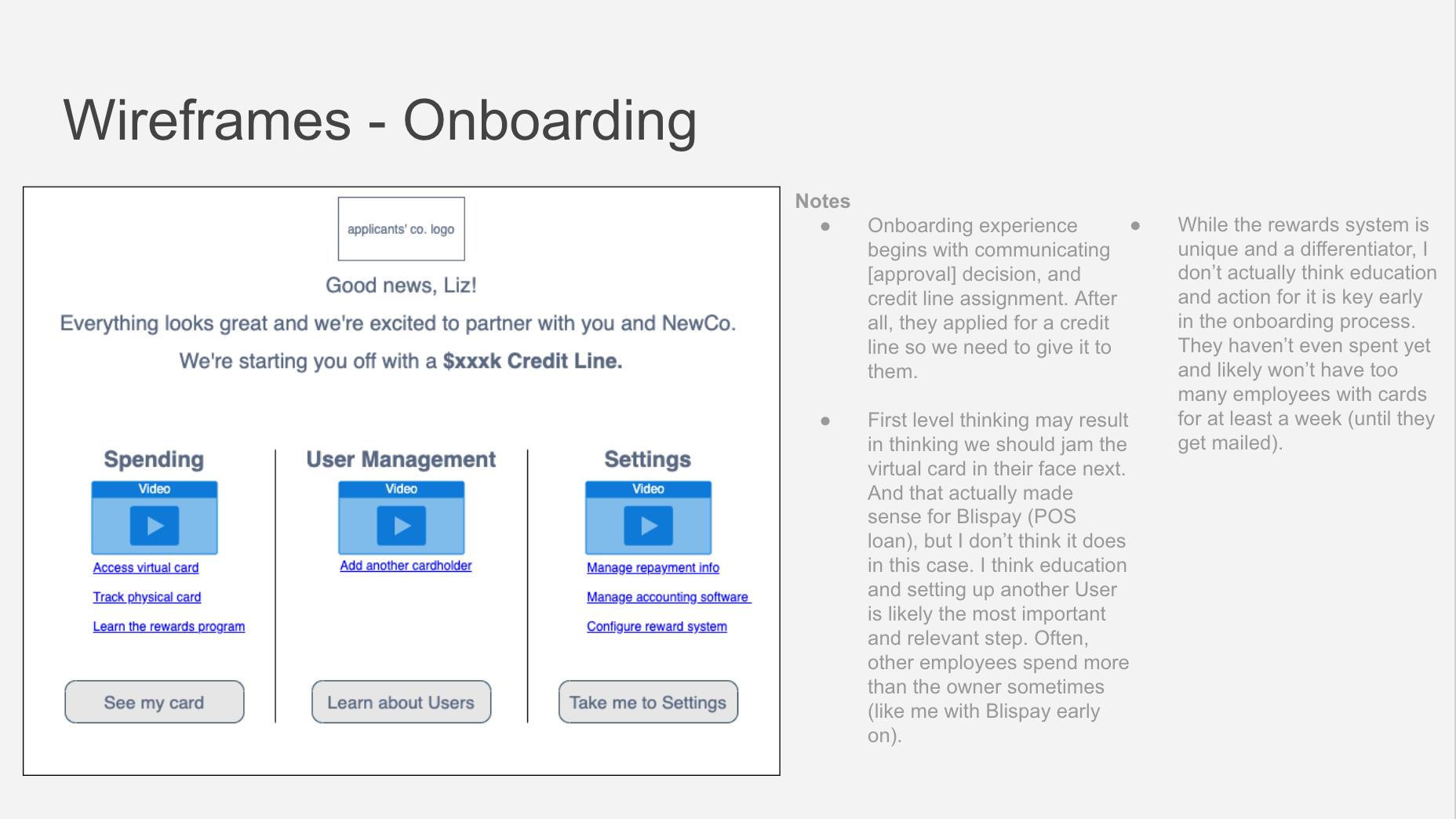
Final Thoughts on The X Card
Notably absent from this exercise was a lack of focus on identifying a target customer and an assumption about whether this/my company is an early-stage startup or incumbent. And as mentioned in the beginning, it didn’t include working alongside partners in other parts of the organization to help identify the opportunity size and financials. These are notable examples of how the exercise didn’t match reality (at least in a competent organization).
As for the X card itself… I don’t really like it. It sounds like a feature more than a product. It’s definitely not a company. If allowed and financially viable, won’t Ramp just allow businesses to choose to redistribute earned rewards back to employees instead?
The previous paragraph may be the most important of the whole exercise. That conclusion is far more important than the form factor, ideas, or pictures in the presentation. At the end of the day, product management’s job is to steer towards success. People often fall in love with pictures and ideas (product managers included) but it’s always important to step back to think objectively. It’s cheaper and faster to iterate on words than real products. That’s the value in exercises like this one.